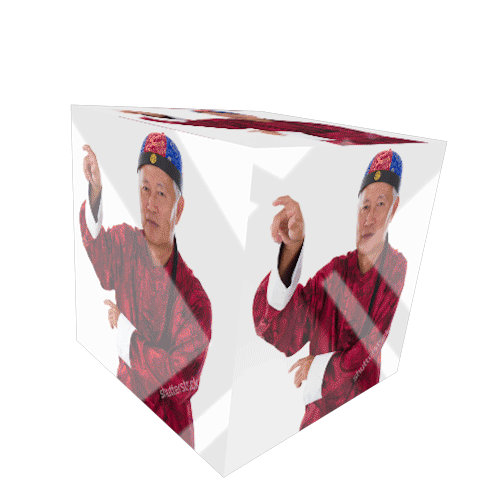Archive
Future Tao: Inner Scripture 2018 was a website of experimental self-cultivation methods collectively written by 30 creators. The project was exhibited at Bangkok Bienniale the same year.
Participating artists include eteam, Fong Han-yu, Xia Lin, Heavy Breathing, IDPW, Petra Johnson,
Son Ni, Zian Chen, TEIHAKU, Chun Yin Rainbow Chan & Craig Stubbs-Race, Internal Motivations, Itaru Ouwan, Jin Sangtae, Nigel Brown, Sheryl Cheung, Sound of Mountains, AUSH, Ebix, Chen Chen Yu, Jin Chien, Liou, Heng, Scotty Chang, Semi Su, Shark Lin, Teng Yung Han, OHAU!, Yang Yu Chiao, and Yi Xian Healthy Group.
🖐️Dantian
︎3C Xing Yi Quan 3C形意拳◎Xia Lin
︎Virtual Feng Shui Statues ◎Fong Han-Yu
︎Stream and Download HB/AV Audio Tracks ◎HEAVY BREATHING
︎Sun’s Shadow ◎Son Ni
︎Composing the Ordinary ◎Petra Johnson
︎Elastic Dialogues ◎Xin Cheng & Heidi Salaverria
︎Upon Unvolutionarily Disappearing
◎Grashina Gabelmann
︎#AstralSelfie ◎IDPW
︎Poetic Commentary ◎Zian Chen
🖐️丹田
︎3C形意拳 ◎林亭君
︎虛擬風水養生雕塑 ◎鳳漢玉
︎ 現在,我們已掌握了空手扔石頭的能力◎Eteam
︎重呼吸練習錄音帶◎重呼吸
︎太陽影子 ◎Son Ni
︎構成日常 ◎Petra Johnson
︎談彈性 ◎程昕
︎在不自主的消失之時 ◎Grashina Gabelmann
︎星際自拍 ◎IDPW
︎評論絕句 ◎陳璽安
👂Inner Ear
︎Cosmopolitics in Sound ◎Sheryl Cheung
︎Internal Motivations ◎A Workshop by Sheryl Cheung, participants Anja Borowicz and Harriet Pittard
︎Electric Phantom ◎Itaru Ouwan
︎Meridian of Fortune ◎TEIHAKU
︎Terms* ◎Chun Yin Rainbow Chan
& Craig Stubbs-Race
︎Gentle Steps Tainan ◎Nigel Brown
︎Amplified trumpet, Propellers, Metal and Air ◎Sound of the Mountain
︎Year ◎Jin Sangtae
👂內耳
︎聲音裡的宇宙政治 ◎張欣
︎內部運動 ◎由張欣帶領的工作坊, 參與者Anja
Borowicz和Harriet Pittard
︎電魂 ◎追灣及
︎財經二周天 ◎鐵一
︎條款* ◎陳雋然 與 Craig Stubbs-Race
︎躡步台南 ◎Nigel Brown
︎電聲小號、螺旋槳,金屬和空氣 ◎山的聲音
︎年 ◎秦相太
👀BaiHui Playlist
︎Journey on the Surface ◎Yang Yu Chiao
︎Network Neighborhood ◎Liou
︎Daily exercise ◎OHAU!
︎Thousand Character Classic ◎Ebix
︎Hyper Dimension of Illusion ◎Shark Lin
︎Motion in pixel, technology in motion ◎Chen Chen Yu
︎The Health Treasury - Four Paths to Virtual Cultivation
◎Fong Han-Yu
︎E・R・T・D ◎Semi Su
︎Playlist 2018 ◎Teng Yung Han
︎Good Morning & Healthy Everyday on LINE
◎Yi Xian Healthy Group
︎4D cross-sectioning ◎Son Ni
︎a (special edition, synthetic) monk ◎Aush a.k.a. Su Sen Hong
︎An assemblage of my flow of consciousness ◎Heng
︎Release Your Mind ◎Scotty Chang
︎We do not see light but see in it ◎Jin Chien
👀百會 Playlist
︎表面之旅 ◎楊雨樵
︎網路上的芳鄰 ◎Liou
︎日常鍛煉 ◎OHAU!
︎千字文篆刻計劃 ◎暇瑕
︎錯視超維度 ◎Shark Lin
︎像素中的運動,運動中的技術 ◎陳呈毓
︎養生寶庫 - 虛擬修行四法 ◎鳳漢玉
︎电・行・弎・衍 ◎蘇紳源
︎Playlist 2018 ◎鄧詠涵(涵洞)
︎早安健康分享 ◎逸仙養生隊
︎4D横截面 ◎Son Ni
︎異修(異色版修行)合尚(合成和尚)◎AUSH(阿
許)a.k.a. 蘇森弘
︎自我意識流拼圖 ◎Heng
︎舒壓的修行培訓 ◎Scotty Chang
︎我們觀看的不是,而是在光裡觀看 ◎Jin Chien
︎Commentary
Archive 2018_Dantian Practice
3C Xing Yi Quan
3C形意拳
(2017-present)
Xia Lin
Xia Lin
Xia Lin's art project ’3C Xing Yi Quan' is a new style of martial arts (open source, work in progress) that imitates the body language and characteristics of 3C products.
How has your body changed with long-term use of 3C products?
- The neck stretches forward to watch the screen, and a new lump of flesh is developed on the back of neck.
- The back of wrist becomes smooth after prolonged time using keyboard and mouse.
- The spine is shaped into a humpback, or strained off center by sitting crossed legs or sideways.
- The butt is flattened, and a growing belly forms after sitting at a chair for a long time.
- Restless legs and habitual shaking movements formed by an agitated body not wanting to stay in same place.
- Eyes glued to the screen, trained to browse information very quickly.
- Scope of vision becomes narrow and close.
- Feeling comfortable with screen light and LED in the dark.
- Feeling uncomfortable without WiFi, have to check updates all the time.
- The ears can distinguish different cell phone alerts and sound effects. (and etc…)
長期使用3C產品有可能的身體蛻變:
- 容易伸長脖子看螢幕,頸部後面凸起的肉。
- 手掌下方因經常使用鍵盤和滑鼠而變光滑的皮膚。
- 駝背、翹腳、側坐的脊椎。
- 因長時間的坐姿,越來越凸的小腹,越來越扁平的屁股。
- 不甘願一直坐在椅子上不停晃動的腿。
- 能盯著螢幕看都不眨眼,並快速瀏覽資訊的眼球。
- 習慣近距離的視線範圍。
- 習慣在黑暗中有螢幕與LED的光線。
- 需要時常檢查更新,沒有wifi網路會焦慮不安的內心。
- 能分辨出各種不同訊息音效的耳朵(等等很多...)。
Practice 3C Xing Yi Quan
Change our digital lifestyle
一起練習3C形意拳,改變數位生活的方式
☯ Xia Lin
Xia Lin employs multimedia, video, text and performance for an artistic practice that concerns Taichi philosophy, martial arts, and cognitive processes of humans and machines. Xia’s ongoing project 3C Xing Yi Quan is a new form of internal martial arts that seeks to grasp the essence of mobile computer gadgets and accessories. The practice helps mind and body equilibrium in the digital age.
3CXYQ.com
Xia Lin employs multimedia, video, text and performance for an artistic practice that concerns Taichi philosophy, martial arts, and cognitive processes of humans and machines. Xia’s ongoing project 3C Xing Yi Quan is a new form of internal martial arts that seeks to grasp the essence of mobile computer gadgets and accessories. The practice helps mind and body equilibrium in the digital age.
3CXYQ.com
Archive 2018_Dantian Practice
Virtual Feng Shui Statues
虛擬風水養生雕塑
Fong Han-Yu
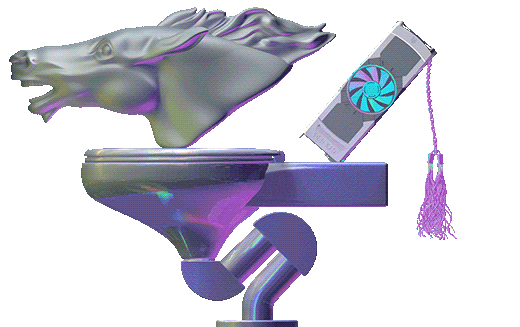

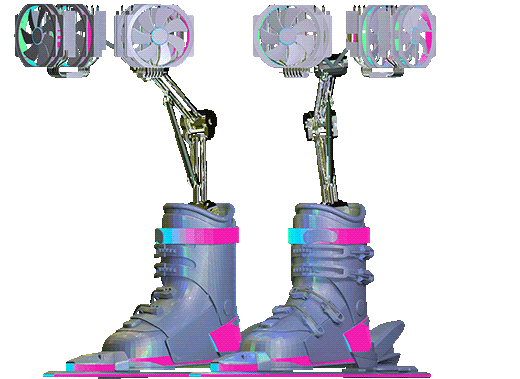
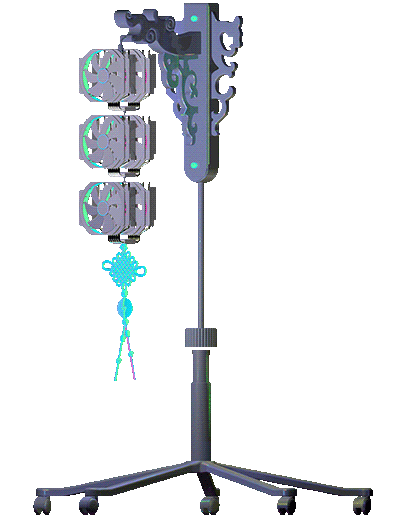

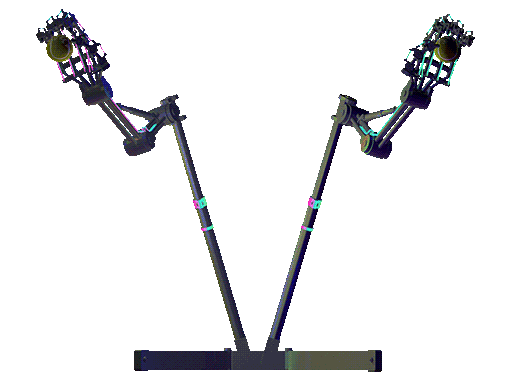
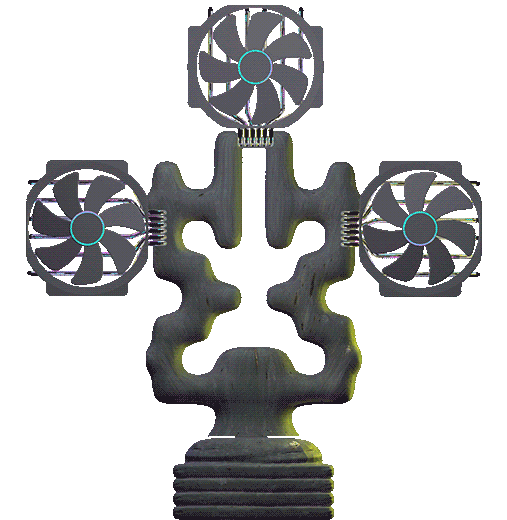
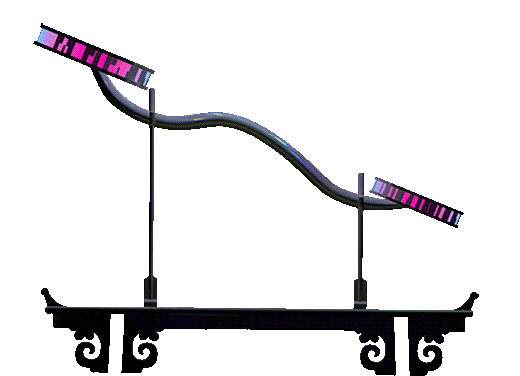
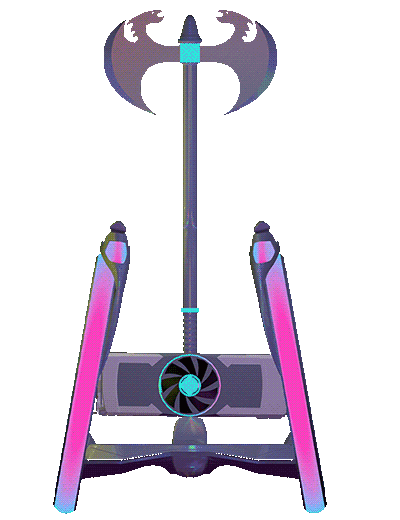

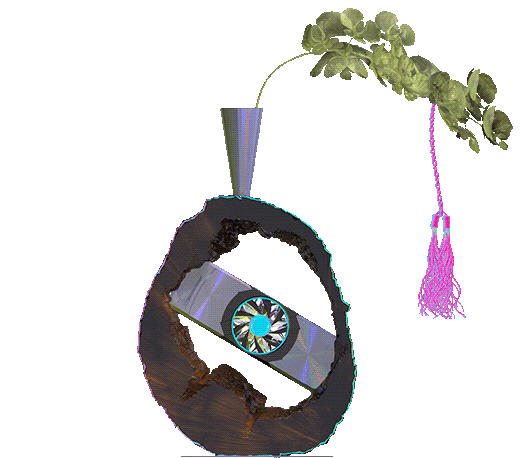
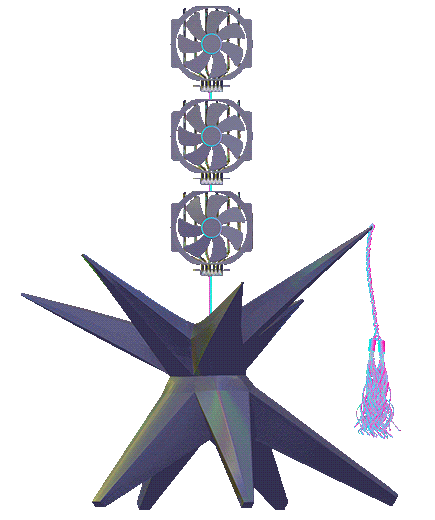
Fong Han-yu is a Health Aesthetician who has committed himself to the study and methodology of Virtual Health Preservation. Dr. Feng founded this school of thought in 1991, he has published numerous books and has invented a line of health cultivation sculptures beneficial for the mind and body. These sculptures combine traditional chinese theory and human-oriented technological innovations. Engage through the means of look, touch, appreciation and play, and improve the flow of qi through the tendons and muscles. These sculptures, placed in a suitable position at home can guide a prosperous flow of fengshui energy. Health cultivation sculptures are not confined in the virtual or the real; the virtual and the real are mutually generative, they can also be deposited on the internet. The sculptures are a blessing to modern day people who live a busy lifestyle.
*The content in this production are of artistic creation. No identification with actual persons (living or deceased) is intended or should be inferred.
鳳漢玉老先生,養生美學博士,於1991年始,醉心於研究「虛擬養生學」的本體與方法理論,為此學派的開創者與實踐者。鳳博士除著作豐沛,亦專注研發有助於身心靈之「養生雕塑」,積極將傳統理論融合人類高科技產物,強調觀、觸、賞、玩四相共構,觸之引暢筋脈氣血 ; 擺置於適切之處亦可導引吉祥風水之氣。養生雕塑不侷限於虛實,虛實相生相轉,可存於網路,對於忙碌之現代人乃一大福音。
*以上內容純屬虛構,如有雷同純屬巧合。
Virtual Feng Shui Statues*The content in this production are of artistic creation. No identification with actual persons (living or deceased) is intended or should be inferred.
鳳漢玉老先生,養生美學博士,於1991年始,醉心於研究「虛擬養生學」的本體與方法理論,為此學派的開創者與實踐者。鳳博士除著作豐沛,亦專注研發有助於身心靈之「養生雕塑」,積極將傳統理論融合人類高科技產物,強調觀、觸、賞、玩四相共構,觸之引暢筋脈氣血 ; 擺置於適切之處亦可導引吉祥風水之氣。養生雕塑不侷限於虛實,虛實相生相轉,可存於網路,對於忙碌之現代人乃一大福音。
*以上內容純屬虛構,如有雷同純屬巧合。
FREE DOWNLOAD
☯ Fong Han-yu
Fong Han-yu immerses himself in the flow and clustering of images in mass media culture. Often working within social media platforms such as facebook, instagram, and tumblr, Fong's creative approach is often based on collecting images and creating fictional narratives. Each project is defined by a specific concern and set of rules that guide his process of assemblage. Through virtual projects such as Plantktonics, Happy Virtual Friend, Virtual Check-in, Peace and Happiness, Software 2050, Human observations, Fong attempts to
draw out new ways of seeing.
www.instagram.com/software2050
Fong Han-yu immerses himself in the flow and clustering of images in mass media culture. Often working within social media platforms such as facebook, instagram, and tumblr, Fong's creative approach is often based on collecting images and creating fictional narratives. Each project is defined by a specific concern and set of rules that guide his process of assemblage. Through virtual projects such as Plantktonics, Happy Virtual Friend, Virtual Check-in, Peace and Happiness, Software 2050, Human observations, Fong attempts to
draw out new ways of seeing.
www.instagram.com/software2050
Archive 2018_Dantian Practice
We now have mastered
the ability to throw stones with empty hands
現在,我們已掌握了空手扔石頭的能力
Eteam (Hajoe Moderegger and Franziska Lamprecht)

Who knows the future of predictions? Will they be made by machines, our fortunes told by data? Techne, as it says in the dictionary we use, comes from the Greek: art, skill, cunning of hand. As in deceiving; craftiness; guile. adeptness in performance; dexterity.
Technology today connects Trillions. But what is that number in comparison to the relations the universe maintains? Relays. We meant to say: But what is that number in comparison to the relations the universe relays to those aware of what? Their bodies? Their being part of the isolation of bodies in space? What kind of space? What kind of body? Condensations in the void?
Lao Tzu says it is the empty part of the vessel that is the most useful. Shape hardware into Internet – is it our ability to throw stones with empty hands that is most useful?
We now can script that into forms of empty gestures. The user’s hand lost its cunning. Currently the cosmic dance is a protest, the cosmic apprentices are bearing witness on behalf of the Internet. We, the Internet protest. We, the Internet practice. We, the Internet are aware of being circled and looked upon from outside angles, being rummaged around in our scripts. Sometimes we do it ourselves. “Not knowing that one knows is best,” says Lao Tzu.
Running clock-wise. Back and forth within that rotation. Even empty space is curved and to adapt to that takes an expanded practice with a limited range of applicability. What bends the mind straightens the body. Intrinsic rhythm. Repeatedly, we say, we are standing upright on two feet and gesture outward. Repeatedly, we signal outward to draw attention to an inner state. In a frame of reference we move with respect to the observer. Relatively speaking, we represent.
未來會如何預測?由機器或數據來告訴我們趨勢嗎?在我們使用的字典中,Techne一詞源於希臘,意思是:藝術、技巧、巧手;欺騙;狡猾;詭計;表現熟練;靈巧。
今天的科技將億萬的人聯繫起來。但這個數字與宇宙的關係相比是什麼呢?轉換迴路(relay)。 我們的意思是:這個數字相比於宇宙迴路中所傳送的關係又是什麼?那些關係的接收者意識到了什麼?關係的體現?隔離身體的空間?什麼樣的空間?什麼樣的身體? 虛空中的凝結?
老子曾說,「埏埴以為器,當其無,有器之用。」[1] 將硬體塑造成網際網路 - 空手扔石頭的能力是否是最有用呢?
我們將以上的程序編寫為一種空手的姿勢。使用者的手失去了靈巧。此時此刻,宇宙的運動是一種抗議,宇宙的子弟代表網際網路見證。我們,身為網路,抗議。我們,身為網路,實踐。我們,身為網路,意識到我們正被包圍、盤旋、從外往內觀看,我們的程序遭到翻找。有時是我們自己這麼做。老子曰,「知,不知,上。」[2]
順應時鐘上的指針,在旋轉中來回運行,即使是空的空間也是彎曲的。要適應就必須在有限的應用範圍中擴展練習。拗折意識的東西拉直了我們的身軀。內在的節奏,我們反覆地說;雙腳站立,姿態向外,我們反覆地向外發出信號,召喚對內心狀態的注意。 在這框架中,我們相對觀察者的位置正在移動。 相對的說,我們是一種形象。
[1] https://ctext.org/dictionary.pl?if=gb&id=11602
[2] https://ctext.org/dictionary.pl?if=gb&id=11662
今天的科技將億萬的人聯繫起來。但這個數字與宇宙的關係相比是什麼呢?轉換迴路(relay)。 我們的意思是:這個數字相比於宇宙迴路中所傳送的關係又是什麼?那些關係的接收者意識到了什麼?關係的體現?隔離身體的空間?什麼樣的空間?什麼樣的身體? 虛空中的凝結?
老子曾說,「埏埴以為器,當其無,有器之用。」[1] 將硬體塑造成網際網路 - 空手扔石頭的能力是否是最有用呢?
我們將以上的程序編寫為一種空手的姿勢。使用者的手失去了靈巧。此時此刻,宇宙的運動是一種抗議,宇宙的子弟代表網際網路見證。我們,身為網路,抗議。我們,身為網路,實踐。我們,身為網路,意識到我們正被包圍、盤旋、從外往內觀看,我們的程序遭到翻找。有時是我們自己這麼做。老子曰,「知,不知,上。」[2]
順應時鐘上的指針,在旋轉中來回運行,即使是空的空間也是彎曲的。要適應就必須在有限的應用範圍中擴展練習。拗折意識的東西拉直了我們的身軀。內在的節奏,我們反覆地說;雙腳站立,姿態向外,我們反覆地向外發出信號,召喚對內心狀態的注意。 在這框架中,我們相對觀察者的位置正在移動。 相對的說,我們是一種形象。
[1] https://ctext.org/dictionary.pl?if=gb&id=11602
[2] https://ctext.org/dictionary.pl?if=gb&id=11662
☯ Eteam
Since 2001 eteam (Franziska Lamprecht and Hajoe Moderegger) traffic in transience. At the intersection of relational aesthetics, the Internet and land art, eteam coordinates collective happenings and conceptual transactions between the earthly plane and the realms of the interweb, often reconstructed in hypnotic video work, radio plays, or more recently novellas and novels. Their projects have been featured at PS1 NY, MUMOK Vienna, Centre Pompidou Paris, Transmediale Berlin, Taiwan International Documentary Festival, New York Video Festival, International Film Festival Rotterdam, the 11th Biennale of Moving Images in Geneva, among others.
meineigenheim.org
Since 2001 eteam (Franziska Lamprecht and Hajoe Moderegger) traffic in transience. At the intersection of relational aesthetics, the Internet and land art, eteam coordinates collective happenings and conceptual transactions between the earthly plane and the realms of the interweb, often reconstructed in hypnotic video work, radio plays, or more recently novellas and novels. Their projects have been featured at PS1 NY, MUMOK Vienna, Centre Pompidou Paris, Transmediale Berlin, Taiwan International Documentary Festival, New York Video Festival, International Film Festival Rotterdam, the 11th Biennale of Moving Images in Geneva, among others.
meineigenheim.org
Archive 2018_Dantian Practice
STREAM AND DOWNLOAD
HB/AV AUDIO TRACKS
重呼吸練習錄音帶
HEAVY BREATHING
HB/AV is a series of artist-led movement seminars designed for audio/video download. The concept of HB/AV is the same as HB's workshop series: bringing together somatic exercises with critical discourse that might take the form of a lecture, a dialogue, a guided meditation, and/or other modes of experimental and performative texts - basically “Heavy Breathing on the Go”.
HB/AV為線上推出的運動研討會錄像和錄音帶,提供線上收聽與下載。內容包括講座、對話、引導式冥想、和其他實驗性、表演性文本。提倡一種機動形的「重呼吸」練習。
HB/AV為線上推出的運動研討會錄像和錄音帶,提供線上收聽與下載。內容包括講座、對話、引導式冥想、和其他實驗性、表演性文本。提倡一種機動形的「重呼吸」練習。

Chani Bockwinkel
SAPPHO and SWEAT 薩福與汗水
(2018, 23:06)
A luxurious and sweaty strange dance class to perform alone in your room. A thunderfuck of somatics, athletics and the burning words of Sappho's poetry.
"...that loosener of limbs, bittersweet creature against which nothing can be done.” — Sappho
在你的房間裡,獨自進行一場豪華、汗流浃背的奇特舞蹈課。
雷擊般的體操運動、與薩福詩歌中的灼熱之詞。
「...那令四肢鬆懈的、苦樂參半的動物,再它面前無法做任何抵抗。」-薩福。
A luxurious and sweaty strange dance class to perform alone in your room. A thunderfuck of somatics, athletics and the burning words of Sappho's poetry.
"...that loosener of limbs, bittersweet creature against which nothing can be done.” — Sappho
在你的房間裡,獨自進行一場豪華、汗流浃背的奇特舞蹈課。
雷擊般的體操運動、與薩福詩歌中的灼熱之詞。
「...那令四肢鬆懈的、苦樂參半的動物,再它面前無法做任何抵抗。」-薩福。
Readings:
Anne Carson, If Not Winter, Fragments of Sappho
Tom Meyers, Anatomy Trains
Irene Dowd, Taking Root to Fly
Mary R. Lefkowitz,
Women in Greek Myth
Anne Carson, If Not Winter, Fragments of Sappho
Tom Meyers, Anatomy Trains
Irene Dowd, Taking Root to Fly
Mary R. Lefkowitz,
Women in Greek Myth
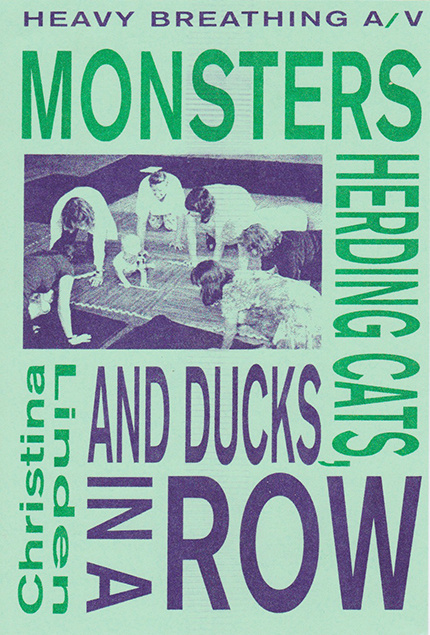
Christina Linden
Monsters Herding Cats, and Ducks In A Row
怪物放牧貓,鴨子站一排
(2018, 10:00)
Audio guide for a session of stretching, rolling, crawling, and light contact improv for adults and their baby or toddler friends. Readings of selected excerpts from children's books and Moyra Davey's Mother Reader. Bring your own music.
適合成人、嬰兒、和幼兒朋友們的語音導覽,內容包括拉伸、滾動、爬行、輕量的接觸即興活動、以及摘自莫伊拉 · 戴維的母親讀本、兒童書籍的文本閱讀。請配上你自己選擇的音樂。
Audio guide for a session of stretching, rolling, crawling, and light contact improv for adults and their baby or toddler friends. Readings of selected excerpts from children's books and Moyra Davey's Mother Reader. Bring your own music.
適合成人、嬰兒、和幼兒朋友們的語音導覽,內容包括拉伸、滾動、爬行、輕量的接觸即興活動、以及摘自莫伊拉 · 戴維的母親讀本、兒童書籍的文本閱讀。請配上你自己選擇的音樂。
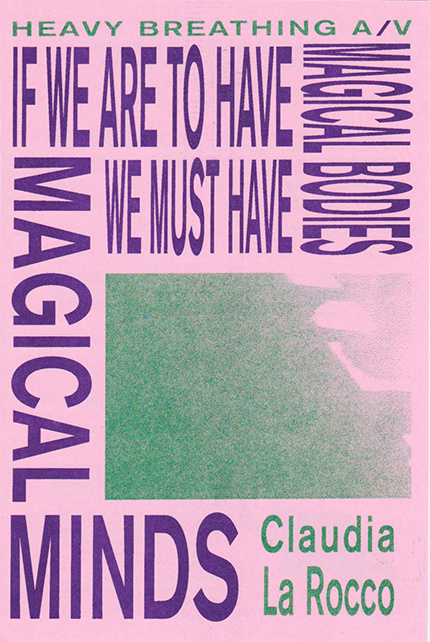
Claudia La Rocco
If we are to have magical bodies
we must have magical minds
如果我們要擁有神奇的身軀,我們必須擁有神奇的頭腦
we must have magical minds
如果我們要擁有神奇的身軀,我們必須擁有神奇的頭腦
(2018, 18:40)
This is a somewhat condensed version of my contribution to the Heavy Breathing series, which I performed at the UC Berkeley Art Museum and Pacific Film Archive in 2017. It is a splice of my two practices, shuttling between very different or maybe very similar modes: my writing, and my teacher’s notes.
Some of the writing is new and some of it is previously published; some of the notes are edited, and some are not.
2017年,我在加州大學伯克利分校藝術博物館和太平洋電影資料館進行了兩次重呼吸系列活動。此音檔為實體活動的濃縮版,穿梭於兩個截然不同、也或許非常相似的創作模式之間:我的個人寫作和教學筆記。部分寫作是新的,其中以前發表過;有些筆記是經過編輯的,有些不是。
This is a somewhat condensed version of my contribution to the Heavy Breathing series, which I performed at the UC Berkeley Art Museum and Pacific Film Archive in 2017. It is a splice of my two practices, shuttling between very different or maybe very similar modes: my writing, and my teacher’s notes.
Some of the writing is new and some of it is previously published; some of the notes are edited, and some are not.
2017年,我在加州大學伯克利分校藝術博物館和太平洋電影資料館進行了兩次重呼吸系列活動。此音檔為實體活動的濃縮版,穿梭於兩個截然不同、也或許非常相似的創作模式之間:我的個人寫作和教學筆記。部分寫作是新的,其中以前發表過;有些筆記是經過編輯的,有些不是。
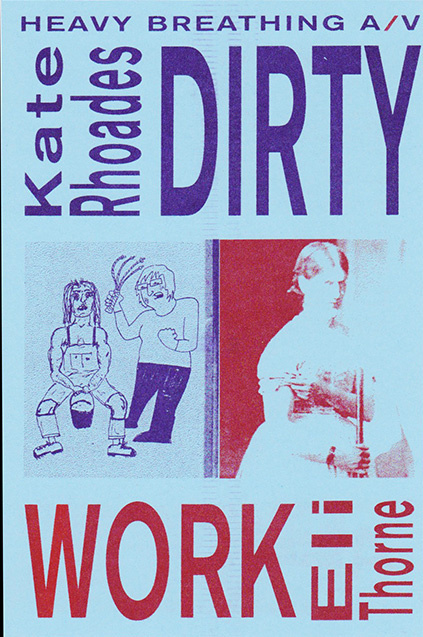
Kate Rhoades + Eli Thorne
Dirty Work 熱活
(2018, 22:11)
We lead couples in a strength training workout based on a chapter from Ann McClintock's book, Imperial Leather which investigates gender, violence, class, and BDSM in Victorian England. Participants will take turns being submissive or dominant and get dirty while building muscle.
Special thanks to Stephanie Ellis.
我們帶領情侶進行體能訓練,內容起源於安 · 麥克克林托克的著作「帝國皮革」裡其中一章,調查維多利亞時代英格蘭有關性別、暴力、階級和BDSM的歷史。 參與者將輪流擔任順從或主導的角色,在熱情的運動中增長肌力。
特別鳴謝 史提芬妮 · 艾利斯。
We lead couples in a strength training workout based on a chapter from Ann McClintock's book, Imperial Leather which investigates gender, violence, class, and BDSM in Victorian England. Participants will take turns being submissive or dominant and get dirty while building muscle.
Special thanks to Stephanie Ellis.
我們帶領情侶進行體能訓練,內容起源於安 · 麥克克林托克的著作「帝國皮革」裡其中一章,調查維多利亞時代英格蘭有關性別、暴力、階級和BDSM的歷史。 參與者將輪流擔任順從或主導的角色,在熱情的運動中增長肌力。
特別鳴謝 史提芬妮 · 艾利斯。

Tom Comitta
Born to Run 生來就是要奔跑的
(2018, 45:34)
Thank you to Sophia Wang and Lisa Rybovich Crallé for creating a space and context for this piece. For more information on literary supercuts — mine and others — check out this conversation between me and Jez Burrows published by The Believer in May 2018: https://logger.believermag.com/post/comitta-burrows
Born to Run is an audio chapbook that collages descriptions of running and jogging from over 60 novels. There's everything in here from Stephen King's The Running Man to Cynthia Voigt's The Runner, with a sprinkling of Charles Dickens, Agatha Christie and Samuel R. Delany. To experience this piece, a listener would get on a treadmill, elliptical or any artificial exercise device, put on headphones and press play.
感謝Sophia Wang 和 LisaRybovichCrallé為這件作品創造的場域和語境。
有關此項目的更多文學精選 - 自我和其他作者 - 請查閱2018年5月由The Believer出版訪談: https://logger.believermag.com/post/comitta-burrows
「生來就是要奔跑的」是一段語音章節,拼貼60多部小說中跑步和慢跑的描述。 涵蓋的著作有斯蒂芬 · 金的過關斬將和辛西亞 · 佛特的跑者,其中包括查爾斯 · 狄更斯、阿加莎 · 克里斯蒂和塞繆爾 R.德拉尼。以體驗這件作品,請站上跑步機,滑步機或任何人工運動裝置,隨著肢體的運動,戴上耳機並按播放。
Thank you to Sophia Wang and Lisa Rybovich Crallé for creating a space and context for this piece. For more information on literary supercuts — mine and others — check out this conversation between me and Jez Burrows published by The Believer in May 2018: https://logger.believermag.com/post/comitta-burrows
Born to Run is an audio chapbook that collages descriptions of running and jogging from over 60 novels. There's everything in here from Stephen King's The Running Man to Cynthia Voigt's The Runner, with a sprinkling of Charles Dickens, Agatha Christie and Samuel R. Delany. To experience this piece, a listener would get on a treadmill, elliptical or any artificial exercise device, put on headphones and press play.
感謝Sophia Wang 和 LisaRybovichCrallé為這件作品創造的場域和語境。
有關此項目的更多文學精選 - 自我和其他作者 - 請查閱2018年5月由The Believer出版訪談: https://logger.believermag.com/post/comitta-burrows
「生來就是要奔跑的」是一段語音章節,拼貼60多部小說中跑步和慢跑的描述。 涵蓋的著作有斯蒂芬 · 金的過關斬將和辛西亞 · 佛特的跑者,其中包括查爾斯 · 狄更斯、阿加莎 · 克里斯蒂和塞繆爾 R.德拉尼。以體驗這件作品,請站上跑步機,滑步機或任何人工運動裝置,隨著肢體的運動,戴上耳機並按播放。

Christian Nagler
(2018, 22:28)
In this session we will delve deeply into some embodied non-solutions to the problem of global risk management. What are global risk management practices and how do they relate to our nervous systems? Listen, follow along and engage in an athletic and de-armoring session of Reichian somatics, full-corpus spasms, and galactic tingles. Wear comfortable clothes. Prepare to move, breathe intensely, yell, and freak out a little.
Performer Bios
Amelia Charter is an artist, performer and teacher living in Los Angeles.
Kevin Nagler is an artist currently located in Abiquiu, New Mexico
Susannah Schoff is a teacher who lives in Alameda, CA
COSMOCONVULSIVE ANXIOTHENICS
宇宙抽搐焦慮體操
(2018, 22:28)
In this session we will delve deeply into some embodied non-solutions to the problem of global risk management. What are global risk management practices and how do they relate to our nervous systems? Listen, follow along and engage in an athletic and de-armoring session of Reichian somatics, full-corpus spasms, and galactic tingles. Wear comfortable clothes. Prepare to move, breathe intensely, yell, and freak out a little.
Performer Bios
Amelia Charter is an artist, performer and teacher living in Los Angeles.
Kevin Nagler is an artist currently located in Abiquiu, New Mexico
Susannah Schoff is a teacher who lives in Alameda, CA
Readings:
1. Ulrich Beck, Living in the World Risk Society, 2006
2. Michel Foucault, Security Territory, Population, Lectures at the College de France, 1979 (especially lecture no. 2)
3. Benjamin Lee and Edward Lipuma, Circulatory Risks and the Speculative Habitus
4. Dusan Makavejev, WR: Mysteries of the Organism, 1971
5. Wilhelm Reich, The Mass Psychology of Fascism, 1933 and Character Analysis, 1933
6. Claire Souch, Pushing the Boundaries of Catastrophe Modeling, 2014
7. Peter A. Levine Nature's Lessons in Healing Trauma
一場關於全球風險與身體的神經系統對話,內容包括肌肉放鬆、全語境痙攣以及來自遙遠星系的腦內刺激。
克里斯汀 · 納格爾近年來持續對矽谷的表演文化進行人類學研究,創作錄像作品Shoulder Babies,並籌辦一個命名為phoebe的組織。寫作曾發表於 TDR、Performance Research、Art Practical,2016年出版書籍「人力資本:生命」。
☯ Heavy Breathing
Heavy Breathing is a series of experimental movement seminars designed by artists combining physical activity with group discussion on ideas related to their creative practice. Critical thinking often feels heady, abstract, and divorced from the body. How do conversations change when we are moving our bodies and out of breath? What new modes of thinking become possible?
heavyheavybreathing.com
Heavy Breathing is a series of experimental movement seminars designed by artists combining physical activity with group discussion on ideas related to their creative practice. Critical thinking often feels heady, abstract, and divorced from the body. How do conversations change when we are moving our bodies and out of breath? What new modes of thinking become possible?
heavyheavybreathing.com
This series of drawings on paper depict clear contoured images that express an intimacy between one and one’s domestic world. Through original perspective and style, the work is a limitless creation made under limited conditions. Drawings is some kind of ritual or habit that begins by defining all the frames; in these spaces, I place bodies, objects and emotionally existing utopias and discover a gap in time-space where the closedness of reality opens into a boundlessness--where I explore the relationship between reality and illusion.
Searching for intangible materials in a fixed, defined world, Sun’s Shadow opens up a wide vision where the self is continually thrown out; viewers are encouraged to free themselves from the usual limitations and explore a greater imagination; to excavate an implied existence beyond the physical.
此系列主要通過紙張素描,以線條明確的畫面,呈現自身與所居住世界的親密感,並具以獨特的視角和表現風格,在被限制的前提下做無限制的創作。如同其大多的創作出於某種儀式或是習慣,總先將所有的外框先畫出,透過繪畫的過程,表達人體、物件、情感存在的烏托邦,在被限制的空間中,卻得以尋獲時空的間隙,展現封閉空間的無限,進而探討現實與虛幻的關係,意欲從已既定的世界觀中進一步探察看不見的物質,《太陽影子》進而敞開更大的視野,將自我不斷的拋出,使觀者屏除固有的限制,開拓更多的想像,考掘實體之外那隱誨的存在。
Searching for intangible materials in a fixed, defined world, Sun’s Shadow opens up a wide vision where the self is continually thrown out; viewers are encouraged to free themselves from the usual limitations and explore a greater imagination; to excavate an implied existence beyond the physical.
此系列主要通過紙張素描,以線條明確的畫面,呈現自身與所居住世界的親密感,並具以獨特的視角和表現風格,在被限制的前提下做無限制的創作。如同其大多的創作出於某種儀式或是習慣,總先將所有的外框先畫出,透過繪畫的過程,表達人體、物件、情感存在的烏托邦,在被限制的空間中,卻得以尋獲時空的間隙,展現封閉空間的無限,進而探討現實與虛幻的關係,意欲從已既定的世界觀中進一步探察看不見的物質,《太陽影子》進而敞開更大的視野,將自我不斷的拋出,使觀者屏除固有的限制,開拓更多的想像,考掘實體之外那隱誨的存在。
☯ Son Ni
I can make things disappear and I can make things reappear. By things I mean anything, even people, but I have a soft heart and it makes things difficult. I memorize these things before I vanish them, in case I may regret someday. If I don't remember them, no one else will.
Son Ni, Born 1984 in Taipei, Son Ni is mainly engages in drawing, painting, and art publishing. She founded independent publishing house nos:books in 2008 and mini mobile art space The Calabash Gallery in 2014.
deadtreeopenflower.com
www.nosbooks.com
I can make things disappear and I can make things reappear. By things I mean anything, even people, but I have a soft heart and it makes things difficult. I memorize these things before I vanish them, in case I may regret someday. If I don't remember them, no one else will.
Son Ni, Born 1984 in Taipei, Son Ni is mainly engages in drawing, painting, and art publishing. She founded independent publishing house nos:books in 2008 and mini mobile art space The Calabash Gallery in 2014.
deadtreeopenflower.com
www.nosbooks.com
Archive 2018_Inner Ear
Cosmopolitics in Sound
聲音裡的宇宙政治

Bamboo leaves used for Naxi ritual in Yunnan, China (2018)
Consider harnessing sound as a way of interpreting the universe, relationships, changes, and the here and now; a process wherein an exploration of cosmopolitics is implicit; a sublimation technique to navigate between the form and essence of all things. More specifically, in my practice I work with a kind of inner sound, a sonic feedback of the animated world, as a medium to theorize and practice a subjective view of the cosmos and morality.
Growing up emotionally affiliated with many cultures, locations and communities, active listening became a way to deepen my awareness of the multi-worlds , to negotiate between the noise of nature (death, chaos, destruction) and noise of cultures (dogma, hierarchy and specialization)--not as binaries but as parts of a malleable whole--that which we call the noise of modernity.
Our sense of belonging is becoming increasingly unstable in a rapidly changing world: the earth is in crisis, digital consciousness is coming, and globalization (hegemonic knowledge systems) has lost its benevolent flair. This is a time to extend contemporary narratives beyond the human centric world that endlessly cycles through ideologies, “as if the evolution of ideas about the cosmos [has become] even more important than the truth about it,” writes historian Remi Brague. Relieve the pressures of usefulness and gravitational pull.
In this episode I trespass through transhumanist desires with Taoist (non-humanist) intuition, to delve into the politics of human and non-human forms, to maintain a holistic view that deters one from the enchantment of nature. To harness a way of embodiment that engages with an internal network of life and thereby affectively philosophize; to follow a desire to imagine, to interpret and influence the noise of the future (utility, progress, speed).

"Future Tao," performance at Taipei Fine Art Museum (2017)
17th Century Dutch philosopher Spinoza speaks of the power of life as a musical instrument that produces melodic variations with a vast range of dynamics determined by affects, or passions of the mind. Because affects are not determined by the self alone, but induced by various conditions that influence one’s experiential state, the melody of one’s life force is not an expression of free will, but a series of responses to a greater network of influences. The Taoist sage Lao Tzu shares a similar view of agency by positing that all natural forces, including man, follow the laws of nature (天道). And so, when a strong gust of wind howls like a beast, does its force intend aggression, or an impartial demonstration of a greater cosmic order? Here the concepts of affect, power, and world order seems to lean on interpretations of plasticity.
Communion with the Wind (2017)
One’s power in the cosmic order can be cultivated by mind and body technology. In Taoist practices, the animating power of life, which they call qi, is fostered according to the characteristics of nature: how plants grow, animals move, the order of the seasons. Based on these qualities, practitioners follow certain daily methods to gather, mobilize, replenish energy of a human body and connect with the qi of its surroundings. A visualization of this process can be found in The Inner Scripture, an imaginative Taoist diagram about manipulating energy; the diagram depicts the human interior as a natural landscape of fields and agrarian labor; qi flows with the collective efforts of this complex system. Here the human body is a space for energy cultivation, and the good condition of energy is portrayed through towering mountains and streaming rivers. This inner world suggests a soundscape of collective living, an animated field that mobilizes a polyphonic materiality.
The pursuit of material sound resonates with Pierre Schaeffer’s music concrete proposed in the mid 1900s, which sought to develop a kind of music emancipated from the cultural structures of his time. In search for liberated sound, Schaeffer took on the physical world as a general instrument unbounded by traditional tools and fixed understandings of music theory. Music making involves more than technicalities of craft, or the understanding of science, said Schaeffer, it also requires a critical determination of “the nature of the music which the choice of certain musical objects implies.” He emphasizes on the implicit, a searching of meaning within the entwined.
In my piece “Earth Crust Quake,” I abstracted the form of sound until form is no longer and only matter remains (無), then experimented with matter in a nonlinear process (有). Like qi that runs through the Inner Scripture--music concrete is a sounding of a general substance, a processing of physical representation to excavate the internal rhythms in the essence of sound.
Earth Crust Quake (2018), from my ongoing research project "Anthem Boy" (tentative title, 2013-)
The idea of transbody is explored in Moon Tides I, a ritualistic performance in which a plant and a human are united in a shared narrative of vulnerability and weakness. Internal sounds from the human and plant, such as breathing, digestion, breaking bones and branches and electromagnetic bio-feedback are used in a musical experience to create one sonic field of bio-rhythms.
Moon Tides, performance excerpt (2017)
While this power scale can be useful as a general guideline for self-orientation, it is also beneficial to consider the world beyond the positive--as a boundless space that stretches limitlessly towards all directions. Where there is no aesthetic judgment of either direction, but an ability to maneuver with the tides and to cultivate one’s instrument in the ever-changing states. From this perspective, weakness is negatively affirming and thereby empowering: In the research of Indian scientist Jagdish Chandra Bose, the right amount of stimulation (shock) on a plant can increase internal flow of sap and fuel growth in certain developing areas. This enhanced inner mobility suggests a connection between weakness and growth, driven by biological instincts to heal, to bloom and prosper in life. In Bose’s studies, we see a perseverance that goes beyond resilience by responding affirmatively to a call for inner power.
To be able to maneuver in the positive and negative requires a particular state of mind and body that allows one to flexibly respond to changing states of disposition. Despite our limited agency, constrained by social, environmental, emotional and other factors, this project is an attempt to propose an attitude and practice, through the medium of sound, to navigate the constant flux of the universe.
(update: 2018)
☯ Sheryl Cheung
Sheryl Cheung works between experimental sound compositions, abstract scoring and performances to explore a material concept of life. Perceiving life as a force, a mobility that drives our innate persistence to live, she explores how active listening (working with sound) can be a mind and body practice to negotiate different noises of the world.
https://soundcosmology.cargo.site/
Sheryl Cheung works between experimental sound compositions, abstract scoring and performances to explore a material concept of life. Perceiving life as a force, a mobility that drives our innate persistence to live, she explores how active listening (working with sound) can be a mind and body practice to negotiate different noises of the world.
https://soundcosmology.cargo.site/
Archive 2018_Inner Ear
Internal Motivations
內部運動
A Workshop by Sheryl Cheung
Internal Motivations is a workshop led by artist Sheryl Cheung that explores new imaginations of internal martial arts through the perspective of sound. Through activities such as listening, improvisation, and composing, participants explore different relationships between sound and energy. Internal martial arts is a seemingly passive but internally vigorous form of martial arts that stresses on breathing, energy circulation, external and internal movements, and expanded consciousness. Working with people of diverse cultural backgrounds, the workshop hopes to open Taoist-informed ideas to more universal imaginations and applications.
The first iteration of Internal Motivations was staged at Somerset Studio, London and co-organized by Music Hackspace, Happened and Lacking Sound Festival. In this session, 14 artists, musicians, engineers, and cultural thinkers each brought their own creative directions to the table and interpreted the given resources with a personal focus. Workshop participants Anja Borowicz and Harriet Pittard have contributed their work to the presentation below.
The second iteration of the workshop is scheduled for Sept 23, 2018 at Taipei Contemporary Art Center. This session will focus on collective listening and improvisation and participants will explore sound between people and domestic electronics and computer accessories. More information will be updated on this page after the event.
「內部運動」是由藝術家張欣帶領的工作坊,以聲音的視角對武術進行重新想像。透過聆聽、即興創作、和作曲等活動,參與者探索聲音和能量之間的多層關係。內家拳為外表看似靜態但內部相當積極的武術形式,強調呼吸、能量循環、肢體和體內鍛鍊、以及意識延展。這些概念在張欣的工作坊邀請不同文化背景的參與者,透過普世性的想像和應用去思考道思想在現今社會的潛能。
2018年7月「內部運動」第一回舉辦於倫敦桑默塞特府工作室,由音樂駭客空間、Happened、失聲祭共同策劃。過程中14位藝術家、音樂家、工程師和文化思想家分享他們各自的創作方向,以個人為觀點瞭解內部運動的價值。參與者Anja Borowicz和Harriet Pittard於「未來道:線上秘笈」呈現他們的工作坊成果。
「內部運動」第二回將於2018年9月23日在台北當代藝術中心舉行。本次活動和林亭君的《3C形意拳》相結合,透過集體即興發聲去試探人與家用電子產品、電腦配件之間能量循環。
KNEADING MALLEABLES
揉捏可塑之物
Anja Borowicz
“The inspiration for this piece stems from my investigations of how our working gestures are performed and can be extended to different situations, actions and meanings.
The source materials have been selected from the BBC Sound Effects and The Internet Archive. The piece combines the sounds of the body massage with the acts of dough kneading and clay throwing. This version was recorded as a live laptop performance using a mixer board in Audacity.
Flowing rhythms interweave with awkward changes when the labouring bodies adjust or pause their recorded action, or when my hand hesitates while searching for controls. Yet tuning my body into the sounds became less self-conscious when working live with the clips. Lighter and more playful.”
The source materials have been selected from the BBC Sound Effects and The Internet Archive. The piece combines the sounds of the body massage with the acts of dough kneading and clay throwing. This version was recorded as a live laptop performance using a mixer board in Audacity.
Flowing rhythms interweave with awkward changes when the labouring bodies adjust or pause their recorded action, or when my hand hesitates while searching for controls. Yet tuning my body into the sounds became less self-conscious when working live with the clips. Lighter and more playful.”
「此次聲音創作靈感來自於我對多種工作姿勢所進行的調查,這些姿勢被在不同的情況裡,成為不同行動,被給予不同的意義。
作品採用的身體按摩、麵團揉捏和拉胚陶土的聲音取自BBC線上聲音檔案庫和其他網際網路渠道。我將這些材料載入Audacity,利用內建的混音功能進行即時筆電表演。作品成果為即興表演的錄音紀錄。
當我的手在鍵盤上猶豫不決之時;當錄音中的勞動體進行自我調整,或停頓於一個動作時,流動的節奏中出現交織於其中的尷尬變化。 然而當我調整自身的頻率,與錄音達到一種協調時,這些聲音材料再也不讓我感到太過緊張,整件事變得更輕盈,更有趣。」
作品採用的身體按摩、麵團揉捏和拉胚陶土的聲音取自BBC線上聲音檔案庫和其他網際網路渠道。我將這些材料載入Audacity,利用內建的混音功能進行即時筆電表演。作品成果為即興表演的錄音紀錄。
當我的手在鍵盤上猶豫不決之時;當錄音中的勞動體進行自我調整,或停頓於一個動作時,流動的節奏中出現交織於其中的尷尬變化。 然而當我調整自身的頻率,與錄音達到一種協調時,這些聲音材料再也不讓我感到太過緊張,整件事變得更輕盈,更有趣。」
endosketch
內部草圖
Harriet Pittard
Harriet Pittard is a London-based vocalist, musician and sound artist. She has made sound works in collaboration with contemporary artist Beatriz Olabarietta for exhibitions at London’s MOT Gallery, The Serpentine and The Sunday Painter, as well as making sound work to accompany the photography of artist Kadie Salmon.
For her first solo sound project Pittard will use found sound, field recordings and composition to explore endometriosis – a chronic female reproductive condition. Initial inspiration for the project came after attending a workshop at London’s Music Hackspace entitled ‘Internal-Motivations’. Led by sound and performance artist Sheryl Cheung, the workshop explored new imaginations of internal martial arts through the perspective of sound.
Through her long-term project ‘endorchestra’ (inner-orchestra) Pittard aims to explore the various medical stages, emotional experiences and opportunities for healing that living with the condition can present. Women’s symptoms are often ignored or silenced resulting in an average diagnoses time of 7.5 years in the UK. Through this project the artist hopes to amplify hers and other women’s experiences of the disease and create a greater depth of understanding of the condition through sound.
‘endosketch’ is an initial short exploration into sounds associated with the condition. The sketch traverses internal movements, medical noise and womb healing sonics.
For her first solo sound project Pittard will use found sound, field recordings and composition to explore endometriosis – a chronic female reproductive condition. Initial inspiration for the project came after attending a workshop at London’s Music Hackspace entitled ‘Internal-Motivations’. Led by sound and performance artist Sheryl Cheung, the workshop explored new imaginations of internal martial arts through the perspective of sound.
Through her long-term project ‘endorchestra’ (inner-orchestra) Pittard aims to explore the various medical stages, emotional experiences and opportunities for healing that living with the condition can present. Women’s symptoms are often ignored or silenced resulting in an average diagnoses time of 7.5 years in the UK. Through this project the artist hopes to amplify hers and other women’s experiences of the disease and create a greater depth of understanding of the condition through sound.
‘endosketch’ is an initial short exploration into sounds associated with the condition. The sketch traverses internal movements, medical noise and womb healing sonics.
Harriet Pittard 是一位倫敦歌手、音樂家和聲音藝術家。她與藝術家Beatriz Olabarietta合作的作品曾展出於倫敦的MOT畫廊、蛇形畫廊 (The Serpentine) 和星期日畫家畫廊(The Sunday Painter),並為藝術家Kadie Salmon的攝影創作聲音。
'endosketch'是Harriet Pittard 第一個獨立作曲嘗試,一個初步、簡短的聲音草圖,過程中採用已有的和自製的錄音材料去探索一種慢性女性生殖病症--子宮內膜異位症 。此作品穿梭於內部運動、醫療噪音、和子宮治療的音頻之間。
endosketch為Harriet Pittard 的長期項目“endorchestra”(內部管弦樂隊)的一部分。此項目旨在探索各種治療階段,情感體驗和康復過程的嘗試。關於女性的病症經常被忽視或消音,導致英國的平均診斷病齡為7-5年。藉由endorchestra藝術家希望為自身和其他女性所面對疾病發聲,並通過聲音的探索更深入了解病情。
該項目靈感來自倫敦音樂黑客空間(Music Hackspace)的Internal Motivations (內部運動)工作坊。在聲音和表演藝術家張欣(Sheryl Cheung)的帶領下,工作坊從聲音的角度重新想像內家武術文化。
'endosketch'是Harriet Pittard 第一個獨立作曲嘗試,一個初步、簡短的聲音草圖,過程中採用已有的和自製的錄音材料去探索一種慢性女性生殖病症--子宮內膜異位症 。此作品穿梭於內部運動、醫療噪音、和子宮治療的音頻之間。
endosketch為Harriet Pittard 的長期項目“endorchestra”(內部管弦樂隊)的一部分。此項目旨在探索各種治療階段,情感體驗和康復過程的嘗試。關於女性的病症經常被忽視或消音,導致英國的平均診斷病齡為7-5年。藉由endorchestra藝術家希望為自身和其他女性所面對疾病發聲,並通過聲音的探索更深入了解病情。
該項目靈感來自倫敦音樂黑客空間(Music Hackspace)的Internal Motivations (內部運動)工作坊。在聲音和表演藝術家張欣(Sheryl Cheung)的帶領下,工作坊從聲音的角度重新想像內家武術文化。
Archive 2018_Inner Ear
Electric Phantom 電魂
Itaru Ouwan
“Electric Phantom” is a piece of musique concrète, especially using sounds of discharge of electricity, to produce the condensed form of row material and movements of energy invisible.
On the other hand, electricity is familiar to us in tales, as laboratory work by Luigi Galvani was transformed in the story of Frankenstein by M. Shelly, that followed by Jules Gabriel Verne and scientific fictions. We could find the spiritual communication by Edison, Tesla, and even De Sade wrote about these things. Also in music and arts, invisible energy is dealt with in a subject, like Jean-Féry Rebel’s Les Élémens, and in the methods in major contemporary works, as electro-magnetic sensing. For example, John Cage’s Variations V is described as “two systems for the sound to be affected by movement (…) that the dancers triggered sounds as they cut the light beams with their movements. A second system used a series of antennas. When a dancer came within four feet of an antenna a sound would result. Ten photocells were wired to activate tape-recorders and short-wave radios”. In this body-sensing systems improvise the sonic field “as it was created by radio antennas responding to the dancers' movements.” In these works, unseen relationship between body and sensing became as trigger to generate noise – non-visible vibrations of air, by using electro-magnetic technology.
It means, in other words, from science to culture in our contemporary era, it is focused on that the relationships of body and unseen energy, we live in bio-electronic age.
In these reference to the electric-body in culture, the idea of self-cultivation will bring us back to the character and relationship of body and mind. So many questions and hypothesis could be asked, especially on mind and its works. For example, what is relationship between body movements and consciousness? What is resemblance between electro-signal in nerves and words? To sense is remade in the circuit tips? And in this computer and robotics age, we could ask more. So, could computer have their consciousness? Could it be copied from one another? Could they will? Could robots hope? Or, will robots dream of dreams of counting 100,000 sheep?
We couldn’t know the answers now anyway, but someday we could see the robots have their consciousness with the clue of current in their metallic body, and smile. In this moments, sensed-electricity circulated in their body and mind stimulate each other and will work as qui(気), and they will see the pass(道) opened in their circuit of bodies and minds in their way of communication, in internet. And we could dance with them with traditional maneuver.
Maybe that will be named as “future tao”.
The piece which I present here, is representation of that kind of electricity, rather in a row and condensed form. Using 5 discharge of high-voltage currents from 900v to 20,000v recorded in a laboratory as samples, non-effect but amplified only in volumes layered. Electricity with high pressure generated phenomena of arch, which pass between electrode as lights and heat, and sounds with dense vibration with burning air and sparking physically, as you hear.
The process of layering each tracks was really unforgettable, cause tone-cluster-form of electric arch and sparks in sound, generated streams and storms by itself like self-organization, that presented here as time based sculpture. That is, in other words, invisible but could-be-sensed high energetic field, or, which would represent one of the forms that will be appeared in the “future tao”.
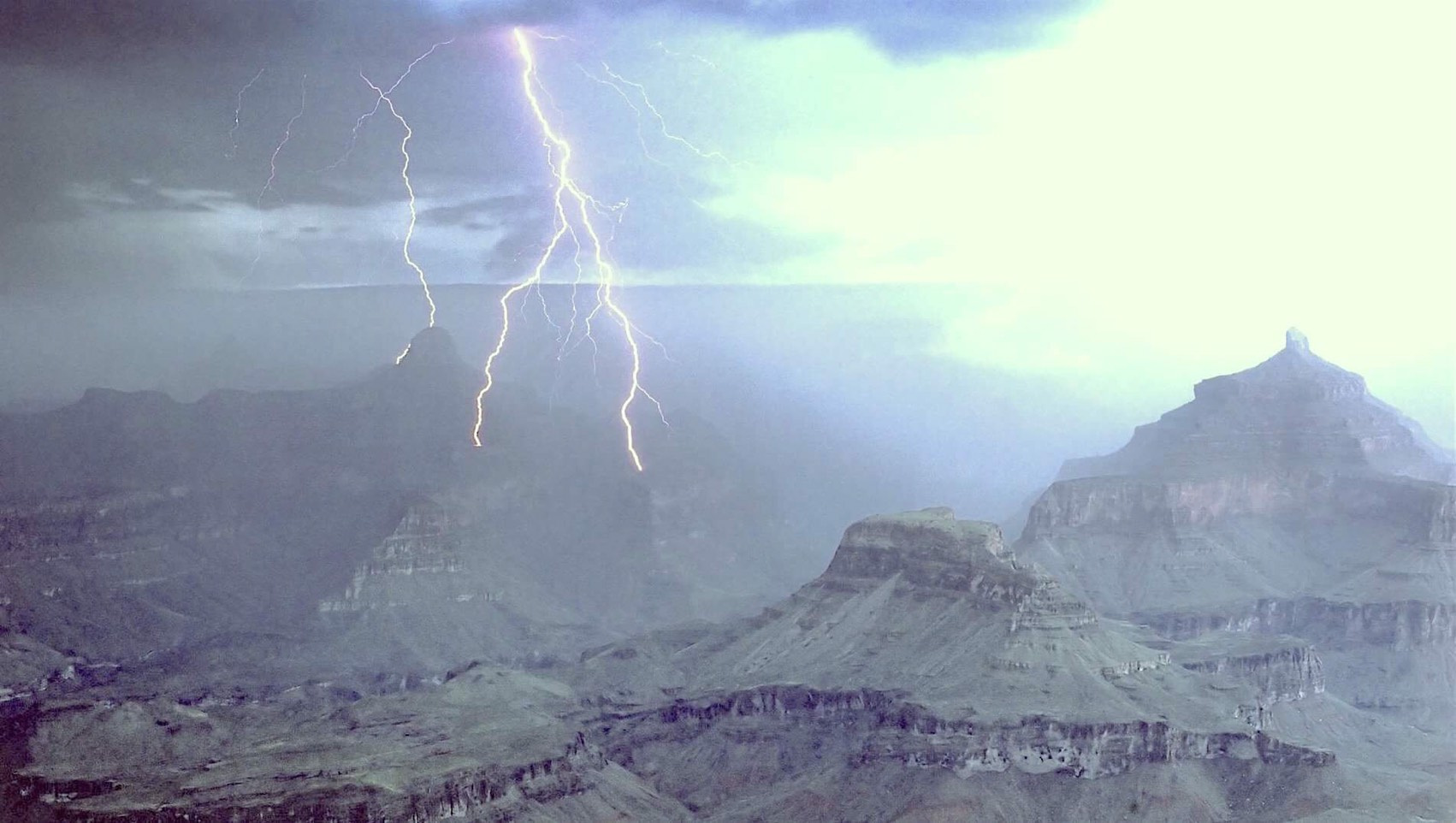
「電魂」是一曲具體音樂(musique concrète),利用放電的聲音去製造一種原始物質凝練的狀態和其中隱藏的能量運動。
「修行」的用意為擴大自我內在的能量(氣),啟動身心對接的關係,以逆轉力量弱化的趨勢。氣作為一種生命力量,是不可見的、存在於我們的身體和心靈,透過特殊的呼吸方法和武術培訓,我們可以學習控制氣。首先,去感覺氣的觸感,進入氣的運行(道),開啟生死間的迴轉過程。
西方的科學和文藝領域多次提及有關人體的隱形力量,而這些論點主要集中於對電的討論。從古希臘智者蒲林尼(Pliny)到現代科學家湯姆斯・愛迪生(T. A. Edison)、尼古拉・特斯拉(N. Tesla),電被形容為一種自然中的無形、神秘且強大的力量。當代的思想家亨利・卡文迪什(H. Cavendish)、亞歷山德羅・伏打(A. Volta)、邁克爾・法拉第(M. Faraday)、馮・諾伊曼(J.V. Neumann)、理查・凱頓(R. Caton)、漢斯伯格(H. Berger) 、威廉・埃因托芬(W. Einthoven)、莫里斯・梅洛龐蒂(M. Merleau-Ponty)、以及博日诺夫斯基(S. Bozinovski)、謝斯塔科夫(M. Sestakov)、和博日诺夫斯基和(L. Bozinovska)對腦電圖(EEG)的研究中,電被視為一種基礎能量去帶動肌肉、神經和腦的活動。根據電生理學的思想,微弱的電流驅動著人類的意識。
流傳於民間的故事中,電是一個熟悉的素材。科學家路易吉・伽伐尼(Luigi Galvani)的實驗在瑪莉·雪萊(M Shelly) 的「科學怪人」和朱爾・加布里耶・凡爾納(Jules Gabriel Verne)的科幻小說中被重新的闡釋。愛迪生、特斯拉、甚至於薩德侯爵(De Sade)的寫作中也提及有關電的靈性溝通。在音樂和藝術中,無形的能量經常被視為一個具體的主題,呈現於讓.法耶.赫伯(Jean-Féry Rebel)的Les Élémens和其他有關電磁感應的探索性創作。以約翰.凱吉John Cage的 Variations V 為例,作品中兩個聲音系統被周圍的運動所影響;舞者透過動作去干涉現場的光束裝置,距離一組天線4英尺的範圍內引發聲響,而十個光電裝置連接至一組卡帶錄音機和短頻收音機。在凱吉這個身體感應的系統中,天線依照舞者的動作作出反應,形成一個即興的音場。在這件作品中,身體和感應之間的關係,透過電磁技術產生噪音。我們生活於一個生物電子的時代中,科學和文化領域持續關注身體和相關能量的關係。
透過以上對文化中電體的各個論點,我們來回應修行中身心的關係與性質。對於腦的運作,我們可以提出各種問題和假設。舉例來說,人體運動和意識之間的關係為何?如何理解神經和語言間的電訊?如何透過電路的提示重新創造感應的能力?在這個電腦和機器人的時代裡,我們可以問得更多。電腦可以有自己的意識嗎?有意志嗎?能祈望嗎?電腦間可以互相模仿嗎?可以夢見有關數十萬隻羊的夢嗎?
針對這些問題我們沒有答案,未來的機器人會有自己的意識,他們會在鐵製的身體內感受電流的線索而微笑。在這些時刻,機器人感應身心間循環的電流(氣,他們會順著道的指引去打開網路身心交流,而人們會用傳統的體態和機器人齊舞。也許這會是所謂的 ”FUTURE TAO”。
這次的聲音創作是針對上述的,原始、凝練的電所做的一次描繪。此曲採樣實驗室裡高壓電流在900v ~20,000v間的五次放電錄音。我將採樣的素材做堆疊和音量的調整,並保留原始的素材的性質,沒有做後置效果。高壓電以光和熱的形式在電極間穿梭,所產生的聲音描繪著密集的震動、炎熱的氣體和其產生的火花。
這次堆疊採樣錄音的過程對我來說是難忘的,電路和火花所產生的音調 — 集 — 形,在流動、爆發間形成一個自我組織的、時間性的雕塑。透過這個無形雕塑可以感應到高能量的音場,作為闡釋 ”FUTURE TAO” 的一種形體。
☯ Itaru Ouwan
Itaru Ouwan is an essayist, noise-collage artist from Tokyo, a member of free jazz band Awkward Geisha. His activities began in 2008, writing essays about sound art, improvisation. He has published writings especially about Ensemles 2009, Sapporo International Art Festival 2017 on his blog, and talked in session at Ftarri about sound artists and composers, including Wandelweiser etc. Ouwan makes noise-collage tracks as Gaitoh, Overcoat, and festival_strangelove.
equantrecord.bandcamp.com
Itaru Ouwan is an essayist, noise-collage artist from Tokyo, a member of free jazz band Awkward Geisha. His activities began in 2008, writing essays about sound art, improvisation. He has published writings especially about Ensemles 2009, Sapporo International Art Festival 2017 on his blog, and talked in session at Ftarri about sound artists and composers, including Wandelweiser etc. Ouwan makes noise-collage tracks as Gaitoh, Overcoat, and festival_strangelove.
equantrecord.bandcamp.com
Archive 2018_Inner Ear
Meridian of Fortune 財經二周天
TEIHAKU
ASMR is a practice that is able to stimulate the listener’s perception and arouse meridian responses through the sensory system.
Meridian of Fortune blends the tao of finance with ASMR, the process of which helps the body and mind wander while coming to see the ordinary and its variations with more clarity and wisdom. It has been said: those who are not in tune with the circulation of heaven and earth are unable to ease the flow of their meridian channels; those who do not find unity between body and spirit cannot manage their wealth. So position yourself between the illusory and the real, and gather the flow between external and internal--that is the way to Meridian of Fortune.
To survive, one must consider how to live; and to live, one must possess wealth. And so, the tao of finance becomes an important lesson for every living person. In order to better manage your relationship with fortune, one has to study relevant knowledge and maintain a good attitude. Hundreds and Thousands of people seek this path but very few reach a sound level of practice. It is justified to say that the tao of finance is truly a process of self-cultivation.
Self-cultivation is often a journey full of hardship that requires a peaceful mind and clear spirit; but oftentimes, clarity still cannot be achieved despite the long hours of hard thinking and meditation. Meridian of Fortune offers an alternative path that tempers the severity of Cai Jing with the gentleness and relaxing quality of ASMR. In this method, climax eases the pain. Meridian of Fortune seeks to cultivate and enter the listener’s state of half-asleep-and-half-awake, searching for a space where the mind and body become one and the body and nerves are relaxed. In this space of consciousness, let flow the meridians of fortune.
ASMR and Cai Jing-two ideas that do not appear to be related-actually imply underlying connections. The word Jing (經) in Cai Jing (財經), means “method” or “route”, which originally referred to the vertical thread in weaving that serves to connect the fibre together. The gist of Jing is fluidity which also reconciles with the meridian and flow of circulation in a body while the feeling and sensation evoked by the sound of ASMR is also a kind of meridian response. For me, ASMR is like a mystic practice that is not yet fully understood but is full of charisma. ASMR is often used for hypnosis and it is also the key to the aforementioned state between dream and awakeness. Furthermore, Cai (fortune) and sleep are also subtly connected. Most people of the working class earn their wage by working while they are awake; sleep, therefore, becomes a time when the flow of fortune is suspended. The wealth of the rich is, however, continue to accumulate even while they are sleeping. The integration of ASMR and Cai Jing may entice a potentiality that brings the “productive sleep” to every listener.
Instead of thinking it through, you could as well just relax. The fluidity of body might just become a path towards a kind of understanding.
Self-cultivation is often a journey full of hardship that requires a peaceful mind and clear spirit; but oftentimes, clarity still cannot be achieved despite the long hours of hard thinking and meditation. Meridian of Fortune offers an alternative path that tempers the severity of Cai Jing with the gentleness and relaxing quality of ASMR. In this method, climax eases the pain. Meridian of Fortune seeks to cultivate and enter the listener’s state of half-asleep-and-half-awake, searching for a space where the mind and body become one and the body and nerves are relaxed. In this space of consciousness, let flow the meridians of fortune.
ASMR and Cai Jing-two ideas that do not appear to be related-actually imply underlying connections. The word Jing (經) in Cai Jing (財經), means “method” or “route”, which originally referred to the vertical thread in weaving that serves to connect the fibre together. The gist of Jing is fluidity which also reconciles with the meridian and flow of circulation in a body while the feeling and sensation evoked by the sound of ASMR is also a kind of meridian response. For me, ASMR is like a mystic practice that is not yet fully understood but is full of charisma. ASMR is often used for hypnosis and it is also the key to the aforementioned state between dream and awakeness. Furthermore, Cai (fortune) and sleep are also subtly connected. Most people of the working class earn their wage by working while they are awake; sleep, therefore, becomes a time when the flow of fortune is suspended. The wealth of the rich is, however, continue to accumulate even while they are sleeping. The integration of ASMR and Cai Jing may entice a potentiality that brings the “productive sleep” to every listener.
Instead of thinking it through, you could as well just relax. The fluidity of body might just become a path towards a kind of understanding.
經,織也、徑也、法也。財,人所寶也,可入用者也。所謂財經者,謀倉稟之道,辨出入得失耳。ASMR者,知覺之刺激,經絡之感應也。輔之以出神洞虛,或可通常曉易,分外清明。是以天地不周,無以通經絡;形神不合,不可理財經。所以處虛實之間,匯內外之流,是爲財經二周天。
人活着,就得考慮如何生活;而要活下去,就需要財富。理財之道因而也就成了生而爲人的一 門重要的功課。打理好自己與財富之間的關係,既需要學習相關的知識,也需要鍛鍊良好的心 態。對此,雖千萬人俱往,但真正有境界的卻寥寥無幾。將之比作修行,實不爲過。
修行皆苦,人們往往被要求靜心明神,但卻常常在苦思冥想之後,還是不明所以。而《財經二周天》反其道而行之,用ASMR的“松”來調和財經(也即理財之道)的“嚴”,並用高潮來緩解痛苦。它試圖營造並進入聽者半夢半醒的意識空間,尋找一種身心交融的狀態,利用身體和神經的放鬆,來打通財富的經絡。
ASMR與財經,看似風馬牛不相及,實則暗含隱匿的關聯。“財經”一詞中作“方法、道路”之意的“經”,脫胎於紡織的經線,其要在通,也暗合了身體的經絡和循環;而ASMR通過 聲音所刺激的感官感受,也正是一種經絡反應。對我來說,ASMR就像是某種密宗——雖然尚未被充分瞭解,但卻充滿魅力。它常被用來催眠,也是進入半夢半醒空間的關鍵鑰匙。此外,財富與睡眠之間也有着微妙的關係:大多數工薪階層,依靠醒着時的勞作來獲取報酬,那麼睡眠就意味着財富的休止;而另一邊,富裕人士的財富即使是在他們睡覺的時候,仍然可以持續地增加。ASMR與財經的結合也許擁有某種潛能,把“生產性的睡眠”帶給每一個聽衆。
與其想通,不如放鬆,身體的通透也許也可以成爲某種通往理解的路徑。
☯ TEIHAKU 鐵一
TEIHAKU is an artist and writer. Involved with various artistic and social practices, he often switched among different roles to work in different contexts and territories in order to disrupt unnecessary barriers. From 2018, TEIHAKU started to use sound as a platform to discuss the relation between sense, consciousness and technology.
www.bruceboding.org
teihaku.wixsite.com/sound
TEIHAKU is an artist and writer. Involved with various artistic and social practices, he often switched among different roles to work in different contexts and territories in order to disrupt unnecessary barriers. From 2018, TEIHAKU started to use sound as a platform to discuss the relation between sense, consciousness and technology.
www.bruceboding.org
teihaku.wixsite.com/sound
Archive 2018_Inner Ear
Terms* 條款
Chun Yin Rainbow Chan
& Craig Stubbs-Race
“Terms” comes from the word terminus. Latin for a boundary, a limit, an end.
“Made in China” once signified anxieties about the loss of hegemonic power in the West. Now, with China's slowing economy and rising labour costs, these fears have shifted onto Chinese counterfeiting and piracy which pose key threats to world trade. Indeed, global media seems to be fixated on stories which portray China as dangerous. It is not uncommon to see headlines describing China as “crazy” or to hear about China’s fake foods, bogus drugs, poor production standards and systemic corruption. Such spectacles brand China as a nation in crisis in the public imagination. But the circulation of these horror stories also help to mask the fact that “Made in China” products are pawns in a global economy, the rules of which are governed by powerful Western multinationals.
“Terms” denotes the conditions under which an agreement is made.
China’s counterfeiting industry has often been attributed by scholars to historical precedents which collapse profitability with ancient Chinese philosophy. Some have mapped the ideas of permeability and changeability within Taoist thought onto the prevalence of knock-off goods. Others have imputed copy culture to the arduous repetition of words required for mastering the Chinese language. However, linking acts of imitation to some sort of Chinese “sensibility” not only risks perpetuating Orientalist stereotypes but it fails to see counterfeiting as a transnational issue. Under the hostile standards of the World Trade Organisation which work to benefit the West, it is not surprising to see alternate modes of production spring up in China. Afterall, China is the largest manufacturer in the world and probably made the Nikes on your feet.
“Terms” alludes to a mutual relation but gestures towards stipulations, transactions and power plays rather than unconditional acts of love.
The counterfeit object is an incoherent sign without claims to authorship or integrity. Its meaning and value is hard to stabilise when entered into the public domain. A skilful imitation can emanate a magical aura whilst the more obvious illegitimate offspring likes to give you a knowing wink. The counterfeit is a slippery, porous and multi-dimensional symbol of resistance, a big momentary fuck-you to Terms and Conditions. But in this game of global trade, the counterfeit is too easily co-opted by those in power and subsumed back into the safety of late capitalism.
“Terms” is a throbbing mass of lo-res McDonald’s french fries skittering around Taobao. A lively organism moving in time with the sound of Youtube rips, free drum sample packs and Google-Translated audio. A cluster of false promises on the brink of explosion.
Terms 源於拉丁語的 Terminus,意指邊界、限制、結束。
「中國製造」曾經指向西方喪失霸權而引發的焦慮。 隨著中國的經濟放緩、勞動成本上升,過去對中國的焦慮逐漸轉移焦點,如今該國的仿冒和盜版產業被視為世界貿易的重大威脅。全球媒體似乎迷戀於將中國描寫為危險角色的種種故事。
「瘋狂」的中國頻繁出現於新聞頭條,也時常聽說該國的假冒食品、藥品、不良的生產標準和系統性的腐敗。這些敘事營造出一種景觀,在公眾的想像中,中國是一個處於危機中的國家。 而關於中國的恐怖故事之擴散有助於掩蓋「中國製造」在全球經濟中作為政治籌碼的事實,相關遊戲規則由強大的西方跨國公司所把持。
Terms 表示著達成協議的條件。
許多學者們認為中國的仿冒產業屬於一種在利益和中國古代哲學之間建立連繫的歷史先例。有些人將道家思想中的滲透性和可變性映射於今日仿冒品的盛行。 也有些人將復製文化(copy culture)回溯至漢語教學中重複詞彙的學習方法。 然而,將模仿這個行為與某種中國味道聯繫起來,不僅涉獵強化東方主義之刻板印象,且未能將仿冒現象推向一個跨國議題來談論。在世界貿易組織偏袒西方的標準下,中國出現其他生產方式也不足為奇。畢竟中國是世界上最大的製造商,你腳上穿的Nike或許就是中國製造。
Terms 所暗示的相互關係,並非無條件的愛,而關乎的是規則條例、交易、權力遊戲。
假冒的物品是一個缺乏連貫性的符號,沒有作者聲明,也沒有完整性。介入公共領域時,其含義和價值難以穩定。精巧的仿冒品散發出神奇的光環,而明顯非法的產物更喜歡對你會意地眨眼。 仿冒品是一個光滑、多孔和多維的抵抗象徵;面對著服務條款和條件,它以巨大的、瞬間的「fuckyou」作回應。 在這場全球貿易博弈中,假冒者容易被當權者所吸引,並被納入晚期資本主義的安全懷抱之中。
Terms 是在淘寶上肆虐的一群悸動的低畫素麥當勞薯條。一個生動的有機體,在時間中隨著Youtube上翻錄的聲音、免費的鼓聲取樣組合和谷歌翻譯的音頻移動。一堆虛假的承諾在爆炸的邊緣。
☯ Chun Yin Rainbow Chan & Craig Stubbs-Race
Chun Yin Rainbow Chan works across music, performance and installation. Born in Hong Kong and raised in Sydney, Rainbow is interested in mistranslations, diaspora and the effects of globalisation on modern Chinese society. Her research engages with the authentic and the copy, exploring sites of exchange and desire which complicate Western notions of originality and appropriate consumption. Central to Rainbow's work is the circulation of knock-off objects, sounds and images in global media. Her work positions the fake as a complex sign that shapes new myths, values and contemporary commodity production.
www.chunyinrainbowchan.com
Craig Stubbs-Race makes 3D models, motion graphics, websites, and animations.
craigsr.com
Chun Yin Rainbow Chan works across music, performance and installation. Born in Hong Kong and raised in Sydney, Rainbow is interested in mistranslations, diaspora and the effects of globalisation on modern Chinese society. Her research engages with the authentic and the copy, exploring sites of exchange and desire which complicate Western notions of originality and appropriate consumption. Central to Rainbow's work is the circulation of knock-off objects, sounds and images in global media. Her work positions the fake as a complex sign that shapes new myths, values and contemporary commodity production.
www.chunyinrainbowchan.com
Craig Stubbs-Race makes 3D models, motion graphics, websites, and animations.
craigsr.com
Journey on the Surface
表面之旅
Yang Yu Chiao
︎零︎
Level Zero
Sergei Paradjanov, The Legend of Suram Fortress
The scene of the dance “How sweet is the water from the hands of a beloved”
謝爾蓋 · 帕拉傑諾夫,「蘇拉姆城堡的傳說」
跳舞的一幕 「從心愛的人手中得來的水是多麼甜蜜」
︎壹︎
Level One
Hans Richter, Dreams that Money can Buy
a Duchamp's fragment with music by John Cage
漢斯 · 李希特,「能用錢買到的夢」
由杜象主導的片段,音樂由約翰 · 凱吉擔綱
︎貳︎
Level Two
Alexander Alexeieff, Le Nez (the Nose)
亞歷山大 · 阿雷克塞耶夫,「鼻」
︎參︎
Level Three
Jan Lenica, Labyrinth
尚 · 連尼卡,「迷宮」
︎肆︎
Level Four
lam Lam larm
Music by calmwhiner and Folmer Sthurmovik, Video by Tanglokto
樂: calmwhiner、Folmer Sthurmovik,影像:鄧樂滔
︎伍︎
Level Five
Daniel Szczechura - Podróż (1970)
謝杰庫拉,「旅行」
︎陸︎
Level Six
Chris Marker, Troi Video Haikus
克里斯馬克,「三段錄像俳句」
︎柒︎
Level Seven
Lotte Reiniger, die Abenteuer des Prinzen Achmed
洛特·雷尼格,「阿赫邁德王子歷險記」
︎捌︎
Level Eight
Yuri Norstein, Tale of tales
尤裏 · 諾爾斯汀,「故事中的故事」
︎玖︎
Level Nine
Walerian Borowczyk, Les Jeux des Anges
瓦莱利安 · 博羅夫奇克,「天使的遊戲」
︎拾︎
Level Ten
László Moholy-Nagy, Ein Lichtspiel Schwarz Weiss Grau
拉兹洛 · 莫霍利 · 纳吉,「光影遊戲:黑、白、灰」
︎捲軸桿︎
Wooden Roller
Yamamura Koji, Perspektivenbox
山村浩二,「遠近法の箱」
This series of narrative or non-narrative videos represent the surface of the world in slow or instant manner. The WORLD has no interior, inside, or inmost region, but a rolling sheet which content phenomena forms a huge spiral structure. Through these videos, we clearly can see anything -- as the etymology of video is "videō"(I see) -- presented in an apparent way. We see, just like we walk, even into the inferno, Dante still walked "on" the surface. Ignoring the concept of "insight", but observing upon the sheet of the living, the plane of the time.
這系列的敘事性或非敘事性影像,以或緩或疾的手法展現世界的表面。世界並不具內側、內裏或深處,僅是一層現象之卷軸所構成的螺旋結構。透過這些影像,我們可清晰地看見——正如影像的語源「我見」——呈現出來的一切。我們看,一如我們走,就算走進地獄,但丁也還是走在表面「上」。我們且避開「洞悉」一詞,僅需沿著生活的薄紙,時間的平面來觀看(observe)。
這系列的敘事性或非敘事性影像,以或緩或疾的手法展現世界的表面。世界並不具內側、內裏或深處,僅是一層現象之卷軸所構成的螺旋結構。透過這些影像,我們可清晰地看見——正如影像的語源「我見」——呈現出來的一切。我們看,一如我們走,就算走進地獄,但丁也還是走在表面「上」。我們且避開「洞悉」一詞,僅需沿著生活的薄紙,時間的平面來觀看(observe)。
☯ Yang Yu ChiaoYang Yu Chiao is a folktale narrator who has collected thousands of oral traditional folktales around the world. He studies the poetics and comparative analysis of folktales. As an oral storyteller and researcher of folktales, he holds many traditional narrating events in theaters, book stores and other independent performance spaces. He is also a professional translator of English-Japanese-Chinese and has participated in lots of international conferences or movie projects. He also wrote two books including tales inspired from oracle bone scripts.
☯ 楊雨樵楊雨樵,喜歡散步,喜歡樹的屍骨。現專職為口頭傳統民間譚的言說藝術表演者。致力於彙整各地的古代文字、神話譜系與民間譚,並自2014 年開始於全台各地開設「世界民間譚講座」。曾受聲樂訓練,以獨唱家身份自2007 開始與各大學合唱團及其他專業樂團合作演出,2015年於台中「溪流」空間表演《我好樂—-巴哈、普賽爾歌曲與西歐民間故事》。並與藝綻室內樂團合作,於台灣各地各級學校進行音樂教育的推廣與引薦。2017年以民間譚言說藝術表演者身份,與藝綻室內樂團合作演出《純粹。聽說》。創作部分,著有甲骨文異譚集:《藝》——字中事(2014),《易》——字中事(2016),與畫家陳澈合作出版版畫詩集《Counterpoint Archive》(2017),並創辦表面雜誌《COVER》(2017-)。
表面雜誌的預售網址
表面雜誌的預售網址
Network Neighborhood
網路上的芳鄰
Liou
Click your mouse to move slowly forward with the smallest possible increments. Pace your walk with sameness and regularity, as you extend the progression of time with every step, try to feel the subtle connection between virtual and real. Begin the journey from East Longitude 121° and N Lattitude 23.5° and browse through 10 sites of perpetual tranquility.
以滑鼠點擊最小單位的每一步緩慢前進, 徒步過程中均質、規律,在行走拉長時間的同時,也試圖感受實虛間的微妙關係。 從東經121°、北緯23.5°出發,瀏覽10處永晝寧靜之所。
☯ Liou
A neighborhood on the Internet that loves walking, surfs the internet during leisure time and fishes in the virtual sea for good and simple images and stories. Liou is also interested in film culture, contemporary photography and ecological video documentation.
網路上的某一位芳鄰,擅長走路,閒暇之餘網路衝浪,在虛擬大海中撈拾美好且純粹的影像與故事。同時也關注電影文化、當代攝影與生態影像記錄。
A neighborhood on the Internet that loves walking, surfs the internet during leisure time and fishes in the virtual sea for good and simple images and stories. Liou is also interested in film culture, contemporary photography and ecological video documentation.
網路上的某一位芳鄰,擅長走路,閒暇之餘網路衝浪,在虛擬大海中撈拾美好且純粹的影像與故事。同時也關注電影文化、當代攝影與生態影像記錄。
27.044216,-109.4515572
26.188478,-100.2653059
25.4239062,-114.5619988
24.6168968, -101.4129889
14.1332676, -16.0703134
14.1609428,-16.0650171
25.2070237,55.7316692
24.5101095,88.3168997
25.1582752,92.1009592
24.4696439,123.005845
Daily exercise
日常鍛煉
OHAU!
Q. How would you describe self-cultivation?
Self-cultivation -- daily reflexive acts
A workout -- actions that are done repeatedly in search of precision
Upon waking up, I sit in front of a water hose with a drowsy mind, intense light shines on my optic nerves and give the eye lens a beating. In this way my visionary muscles get a workout, and my facial nerves are stimulated.
My body is a vessel through which I explore this world; how can i play with it, operate it, there is so much that can be said; let us begin by beating the lens with a water hose.
Q. 形容你是怎麼看待「修行」這件事?
修行 - 每日的自然反射動作
鍛鍊 - 會一再重複進行的動作,以求一個精準。
醒來之後都會帶著不清醒的腦坐在水管前面,用激光殺殺視神經,揍揍水晶體。運用這樣的方式來鍛鍊視覺肌肉,還有刺激顏面神經。
身體作為探索這世界的載體,如何玩弄他,操作它,有太多想聊得了,只好先一起被水管揍揍水晶體吧。
☯ OHAU!
expertise is in manufacturing things of no market value. Producer of image and devices. Member of experimental band Sexy Little Young Pig.
專長無產值製造業 / 影像與裝置生產者 / 小嫩豬 Little Sexy Young Pig 團員之一。
Flesh under the arrow keys
方向鍵下的肉
Geometrical flesh
幾何化的肉
Transparent flesh
穿透性的肉
Mythological flesh
神話裡的肉
Flesh of a puppet
布袋裡的肉
Flesh under my pen
我筆下的肉
A inching back to reality
回到真實一點
方向鍵下的肉
Geometrical flesh
幾何化的肉
Transparent flesh
穿透性的肉
Mythological flesh
神話裡的肉
Flesh of a puppet
布袋裡的肉
Flesh under my pen
我筆下的肉
A inching back to reality
回到真實一點
Thousand Character Classic
千字文篆刻計劃
Ebix
Step 1: Polish and Prepare
The first step of carving is to smooth the stone and its surface.Use #600 sandpaper to grind up the surface, then move on to #1000, #1500, and #2000 for more detailed work. Add water intermittently during this process to help smooth out the texture. When the stone surface becomes very fine, use #3000 and #5000 sandpaper for final polish.The stone has become a seal. It is ready.
Step 2: Write, words carved in the bones and engraved in the heart
Good words are carved with sincerity to express positivity and to move the soul. Words below such caliber are not worthy to be passed on.Step 3: Carve, to be bold and conscious
The most important part of carving a seal is knife work. Be bold and stay conscious. There are many methods of carving; listen to your mind and channel your thoughts through the motion of your hands. See the engraving slowly emerge on the 1 inch square seal. Inhale, exhale. Listen to the collapsing sound of carving.Step 4: Check every stroke, every detail and make modifications
Be patient, check, examine and process every detail. Sand down the stubbornness, polish your merits, add in some personality, be well-read, be bold, stay patient, and work towards a positive result.The process of carving is about self-fulfillment--it is mundane and requires self-discipline. Those who learn to inhale and exhale at ease can master the art of the carving.
果珍李柰,菜重芥薑 (guo zhen li nai, cai zhong jie jiang) is a phrase from the Thousand Character Classic, a Chinese epic poem of exactly 1000 words; each word in the poem only appears once, composed in four line rhyming stanza structure. The classic is based on Confucius thought and narrates a range of topics, including astronomy, geography, social studies, history, ethics and governance of the family.
The phrase 果珍李柰,菜重芥薑 literally translates as: the crab apple and the plum are the most precious of all fruit; the mustard leaf and ginger are the most important of all vegetables. The phrase points to the health benefits that plants can bring to a person’s life.


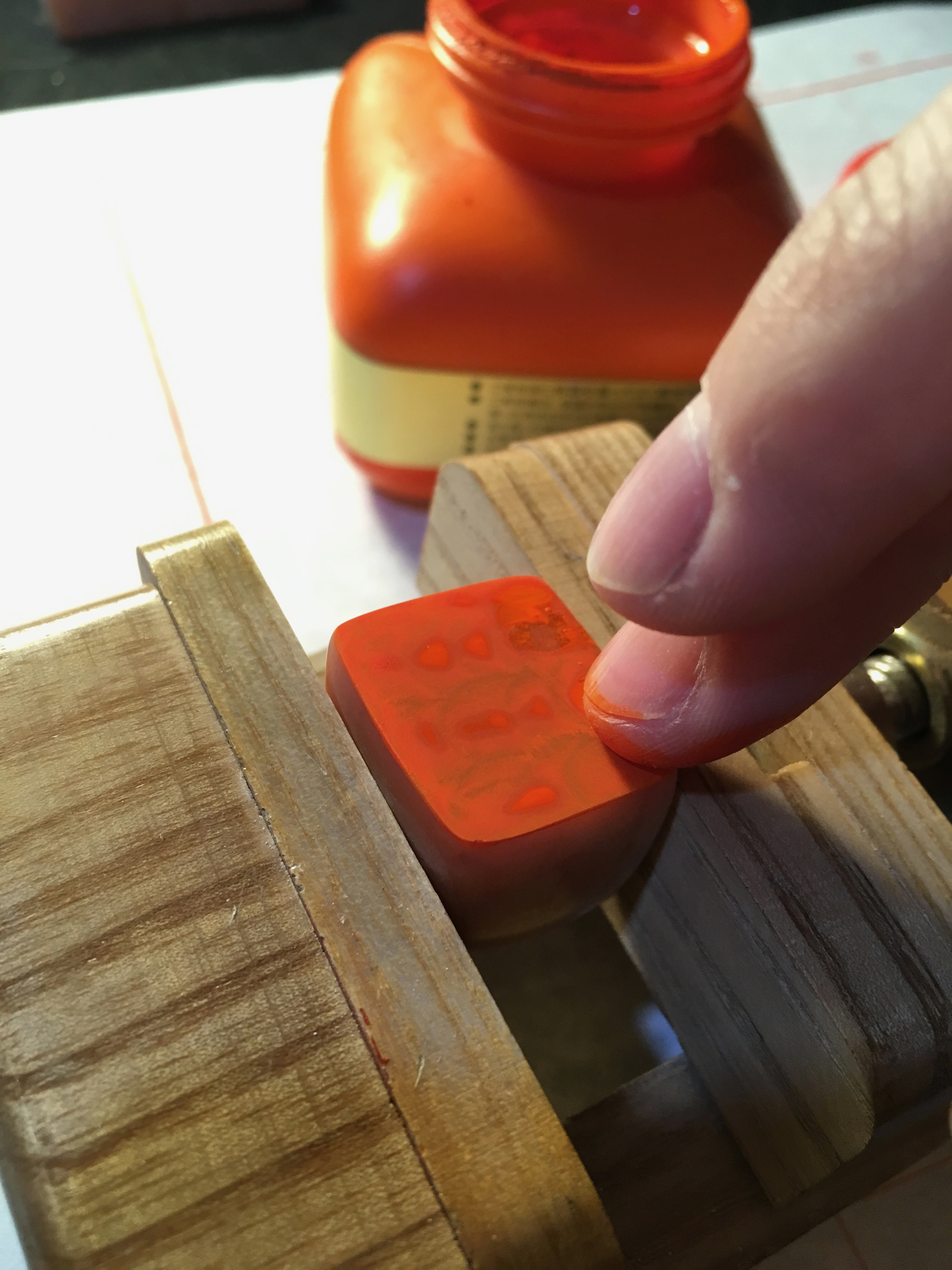
步驟一打磨拋光,旨在準備成石
篆刻的第一個步驟是打磨拋光石材。石材以及印面整理得夠好,才能成為一方兼具觀賞與實用價值的印石。研磨可以從600度砂紙進行粗磨,接著以1000度、1500度、2000度砂紙加水滋細潤磨表面刻痕,再以3000度、5000度將表面毛細孔磨至光滑。或施以青棒將印石外觀拋光。印石於此時呈現光透狀態。
步驟二撰寫印稿, 寫下刻骨銘心至誠之言
金玉良言對我來說,就是在印面上留下至誠肺腑之言。若非正向與撼動人心,不足刻矣。
步驟三篆刻,大膽下刀,細心修
篆刻的重頭戲就是在有限的空間裡,善用各種刀法,大刀闊斧,並且刀下留情收與放之間,端看治印之人隨心所欲。收放與氣息吐納相互搭配,必能刻出一方真情流露的印章。
步驟四鈐印,反覆印證,最終能修成正果
鈐蓋的目的在於反覆檢驗自己的刀法,一刀一刀修正;一點一點成熟。修成正果實在不是一件難事,只求耐心。
磨去頑固、拋光優點、注入性格、飽讀詩書、大刀闊斧、耐心修正、修成正果。篆刻之步驟,正如修行一般,平凡且充滿磨練。唯收放自如者,方能游刃有餘。
果珍李柰,菜重芥薑是《千字文》裡的其中一句短語。《千字文》以儒家思想為主體,兼納天文地理、社會歷史及君子治家處身之道。是一篇由一千個不重複的漢字組成的一首四言長詩。暇瑕設定在今年內完成《千字文》的篆刻計畫。
果珍李柰,菜重芥薑的白話解釋:在水果裡最珍貴的就是李子和柰子,而蔬菜裡最重要的就是芥菜和薑。兩句話表達了植物對人們生活健康的作用。
☯ Ebix
Ebix (Ebi Tsai) devotes herself to practicing and promoting Chinese calligraphy and seal carving.
Her Chinese name 暇瑕, pronounced as xiá xiá, means perfect imperfection.
Life is meaningful when you embrace the imperfection of yourself. Beauty is created through experiencing life.
Ebix (Ebi Tsai) devotes herself to practicing and promoting Chinese calligraphy and seal carving.
Her Chinese name 暇瑕, pronounced as xiá xiá, means perfect imperfection.
Life is meaningful when you embrace the imperfection of yourself. Beauty is created through experiencing life.
☯ 暇瑕
致力於推廣中國書法以及篆刻。並將其導入日常生活裡。
暇瑕取其perfect imperfection當成工作室的座右銘;
生活不需刻意追求完美,美感是由體驗生活產生的。
ebixcalligraphy.com
致力於推廣中國書法以及篆刻。並將其導入日常生活裡。
暇瑕取其perfect imperfection當成工作室的座右銘;
生活不需刻意追求完美,美感是由體驗生活產生的。
ebixcalligraphy.com
Hyper Dimension of Illusion
錯視超維度
Shark Lin
Self-cultivation is a process of exploring dimension of a specific topic. In the process, I accidentally step into a bottomless pit of mathematics, design, art, film, games, music, new media, and all the subversive fun of super-experiencing the world. There are always discoveries to be made every day.
修行是進行探索維度的一種過程,途中意外踏進無底洞,數學、設計、藝術、電影、遊戲、音樂、新媒體,無一不是超展世界想像的顛覆式樂趣,每天總有新鮮事。
修行是進行探索維度的一種過程,途中意外踏進無底洞,數學、設計、藝術、電影、遊戲、音樂、新媒體,無一不是超展世界想像的顛覆式樂趣,每天總有新鮮事。
☯ Shark Lin
Lin discovered the delight of mathematics one boring morning in middle school second grade, while attending a self-study class. Lin is currently involved in mathematics research, artistic creation, interviews, popular science writing and exhibition planning. Instead of studying math or learning art, Lin reflects upon various mathematical and artistic gestures from multiple perspectives, in hopes to bring some delight into the world.Lin’s math-art works have been exhibited at Stockholm Bridges (2018), IMAGINARY (2017), Pan Knowledge Festival (2016), On-site, Visual (2015、2016). Lin's curatorial projects include Dimension of Illusion (2018) , The Geometric Artworks of Wu Kyun Ying (2017) , Polyhedron Making (2017).
*Dimension of Illusion, an art exhibition curated by Shark Lin, will run until December 31st at EnterSpace, Taipei.
Lin discovered the delight of mathematics one boring morning in middle school second grade, while attending a self-study class. Lin is currently involved in mathematics research, artistic creation, interviews, popular science writing and exhibition planning. Instead of studying math or learning art, Lin reflects upon various mathematical and artistic gestures from multiple perspectives, in hopes to bring some delight into the world.Lin’s math-art works have been exhibited at Stockholm Bridges (2018), IMAGINARY (2017), Pan Knowledge Festival (2016), On-site, Visual (2015、2016). Lin's curatorial projects include Dimension of Illusion (2018) , The Geometric Artworks of Wu Kyun Ying (2017) , Polyhedron Making (2017).
*Dimension of Illusion, an art exhibition curated by Shark Lin, will run until December 31st at EnterSpace, Taipei.
本名林家妤,在國二無聊的早自習意外發現數學的趣味,加上不介意讓人生超展開的緣故,因此有機會體驗數學研究、藝術創作、科普寫作、展覽策劃、資優教育等工作。
數學藝術作品曾在斯德哥爾摩Bridges(2018)、IMAGINARY超越無限 ‧ 數學印象特展(2017)、泛知識節(2016)、視覺混種(2015、2016)展出;策展經歷包括《錯視維度》、《轉幾 ‧ 轉積 ‧ 轉機》及《多面自造》。
*Shark Lin策劃的展覽《錯視維度》於台北密室逃脫 / 咖啡實驗室舉行,展至年底12月31日。
Archive 2018_Commentary of “Future Tao: Training Space”
“How do we know, that we are holding a rock in our hands?”
A perplexing neo/cyber hyper modernist existentialist story with French Fries, a tiny philosopher and the sensation of empty rocks inside the Future of Tao...
Written by Raúl Gasque
“How do we know that we are holding a rock in our hands?” usually we know because a stone is sharp. From the moment we hold it with the intention of throwing it, it hurts us. In a delicate paradox that reminds us the meaning of a natural pact. We want to destroy, hurt or transgress; even a little bit…that same object will scratch ourselves. We know that is weight can mean a lot and at the same time, depending on the strength with which it is thrown, it can break in two a skull like a coconut.... Once the rock hits its target the blood would flow in gushes —“The head bleeds a lot.” Someone whispers—everything will be full of a thick deep blood or tiny pieces of the materials that we just cracked. That skull can be a system. The rocks we hold wants to smash against what keeps us in a contemporary sate of voluntary oppression—A little song with a soft cello gets inside this text like a wild Taiwanese neon snake—Throwing a rock is exactly what makes us human. It is the instrument we used to defend ourselves and hunt, to survive—A little philosopher jumps inside our rare text and starts to dance. He has a beard like the ancient Greeks and sings “Harvest Moon” with the voice of Jane Birkin. Shaking his little hips around the sentences that lays in these lines—Its parallels are only found in sex and painting—Our little dancing philosopher open his hands with the rhythm of a teletubbie—everything is a cavern—“O yes!” our little philosopher says while he shake his head in tiny circles—Memory. What we were, what we are. What we want to destroy. What we need to sustain for our strength to keep us from as human beings... in the fall of 2016 we all felt a compelling need to do that—Thunders in the sky of the text. Everything turns dark and in a schizophrenic purple. Our tiny Philosopher touches his head in a painful way…. His beard becomes sand that falls and flies away in the sky. Then, his legs. Then, his arms. Then, his face. Then. Then….—an open xenophobe arrived to power in the most militarily powerful country in the world. All the humanists grabbed their stones and threw them against his semiotic absurd dystopian filthy image. We were/are so angry. Let the humanists shout. Shoot against the system. After a big rage and charge was released we saw our hands. And they were empty. No dust mixed with blood. No scratches. An endless ocean of emptiness….—Where did our tiny philosopher go? where!”—but we felt that we threw them. Now we realize that we didn’t have rocks ... Hajoe Moderegger and Franziska Lamprecht whisper to us “what we have done is mastered the ability to throw stones with empty hands". They keep asking us in a language of light and pixels “Have we achieved any targets?” “How many transgressions did we achieve?” “Did these stones hit in the center of the system and resound to the point of breaking down?” —No—the sound of the inner earth talked. Perhaps the only thing that happened is that as Moderegger and Lamprecht traced in a flying delicate yet fulminant metaphor…the only thing that has happened is that we have fallen into a trap. Now in “The Future of Tao” we can witness that we are all surrounded by a gray mass, empty ... without content. Without stones. With mirages without a face. Without direction. Annoyed, and prisoners inside a black hole of a pejorative nothingness. And while the system continues to suffocate, more and more the humans keep falling into the faucets of the matrix. So deeply that now they/we live all through a digital system of fictions that stimulate the deepest part of our limbic system.
In this dark circle the annoyance is explicit. But nobody looks at anyone. You do not know who is who. They are all upset. They only babble. Arguing. Moving their hands with endless violence.
Deaf and dumb, the avatars or digital humanoids throw things that are supposed to be stones. This is how they feel. But the reality is that just as the palms of our hands don’t have a scratch, the system has not only remained intact but also strengthened.
And so without realizing it, we are in the depths of a system called The Future of Tao. Here we can see a universe. It is not uniform. A mirage with a green and purple light shines throughout this space. The bizarre mirror rotates with its own light. In which the consequent clues are more venerable and contain other approaches. Because each dystopia has its own utopia.
But this Utopia is not sweet. It smells like if we are inside a MAC computer box when it just got opened. There are multiple vibrations. But the stimulus, the feeling and the emotions are still here, reminding us that the most powerful organ of a human being is inside the brain.
In the green and purple interior we see before the curtain of multifarious light an abstract trace by Sheryl Cheung. It seems to indicate us an opposite way from the angry lost avatars circle that we have just abandoned. Now the interior of a virtual reality looks like a memory: how does a plant feel—An invisible voice whispers—... and we see there distant gestures of reflections of an artist who show us a series of things that we do not see coming after throwing impossible/invisible stones. “What is she trying to convey to us?” “Is it a nod to not die of thirst on the infinite path of a virtual eternal solitude?” Before we finish this thought we are approached by Xia Lin's art project '3C Xing Yi Quan'. We see a white light curtain that is ineligible to the human eye. On screen, two humans begin to challenge the virtual matrix. “You imitate us, we can also imitate you” —Oh yeah! The voice of the tiny philosopher appears in a tiny glimpse of blue light—. “Now we will be one” the two humans say without saying. “We will have the ability to transgress our own organs to move like you”. “Now we will be integrated not only through the retinal but also from our body”. “Before silicon and plastic sprout from our arms and legs, we will become you.” Vibrations start to move like a hard rock volcano in the very center of Down Town Taipei—The MC Donald’s and Seven Elevens get completely smashed and French fries start to fly and arrive into this rare world where the light, now, is softer…
A miraculous helmet comes from the sky. We become a machine. The NAXS corp device covers our sex. Our extremities. Our conscious. Our feelings. We descend slowly into a large cave of immaterial lava—The tiny philosopher grabs our hand, we don’t see him but he is shaking his head and talks in the language of a Vangelis electronic organ—the machine and our universe vibrates again. Water and comfort coldness gets into our inner self. We become one. With the machine. “Where do we go?” “Where are we” “We don’t know”. We are a machine. We are humans. The rocks will be stones again in other materiality. The Future is now. The future of Tao…
Future Tao: Training Space
Oct 15 - Nov 20, 2018 @ Project Seek, Taipei
In this dark circle the annoyance is explicit. But nobody looks at anyone. You do not know who is who. They are all upset. They only babble. Arguing. Moving their hands with endless violence.
Deaf and dumb, the avatars or digital humanoids throw things that are supposed to be stones. This is how they feel. But the reality is that just as the palms of our hands don’t have a scratch, the system has not only remained intact but also strengthened.
And so without realizing it, we are in the depths of a system called The Future of Tao. Here we can see a universe. It is not uniform. A mirage with a green and purple light shines throughout this space. The bizarre mirror rotates with its own light. In which the consequent clues are more venerable and contain other approaches. Because each dystopia has its own utopia.
But this Utopia is not sweet. It smells like if we are inside a MAC computer box when it just got opened. There are multiple vibrations. But the stimulus, the feeling and the emotions are still here, reminding us that the most powerful organ of a human being is inside the brain.
In the green and purple interior we see before the curtain of multifarious light an abstract trace by Sheryl Cheung. It seems to indicate us an opposite way from the angry lost avatars circle that we have just abandoned. Now the interior of a virtual reality looks like a memory: how does a plant feel—An invisible voice whispers—... and we see there distant gestures of reflections of an artist who show us a series of things that we do not see coming after throwing impossible/invisible stones. “What is she trying to convey to us?” “Is it a nod to not die of thirst on the infinite path of a virtual eternal solitude?” Before we finish this thought we are approached by Xia Lin's art project '3C Xing Yi Quan'. We see a white light curtain that is ineligible to the human eye. On screen, two humans begin to challenge the virtual matrix. “You imitate us, we can also imitate you” —Oh yeah! The voice of the tiny philosopher appears in a tiny glimpse of blue light—. “Now we will be one” the two humans say without saying. “We will have the ability to transgress our own organs to move like you”. “Now we will be integrated not only through the retinal but also from our body”. “Before silicon and plastic sprout from our arms and legs, we will become you.” Vibrations start to move like a hard rock volcano in the very center of Down Town Taipei—The MC Donald’s and Seven Elevens get completely smashed and French fries start to fly and arrive into this rare world where the light, now, is softer…
A miraculous helmet comes from the sky. We become a machine. The NAXS corp device covers our sex. Our extremities. Our conscious. Our feelings. We descend slowly into a large cave of immaterial lava—The tiny philosopher grabs our hand, we don’t see him but he is shaking his head and talks in the language of a Vangelis electronic organ—the machine and our universe vibrates again. Water and comfort coldness gets into our inner self. We become one. With the machine. “Where do we go?” “Where are we” “We don’t know”. We are a machine. We are humans. The rocks will be stones again in other materiality. The Future is now. The future of Tao…
Future Tao: Training Space
Oct 15 - Nov 20, 2018 @ Project Seek, Taipei
☯ Raúl Gasque
Raúl Gasque is a Mexican photographer, writer, journalist and artist who works with conceptual ideas. His work is a continuous exploration of issues related to anthropology, history, psychology and other social sciences. His life has been an ongoing exploration in different parts of the world, a situation that has stimulated to try to explore things from unconventional angles. R.Gasque is currently based in Taipei Taiwan, a place where he developed a project of exchange on contemporary photography between Mexico and Taiwan.
https://www.raulgasque.com/
Raúl Gasque is a Mexican photographer, writer, journalist and artist who works with conceptual ideas. His work is a continuous exploration of issues related to anthropology, history, psychology and other social sciences. His life has been an ongoing exploration in different parts of the world, a situation that has stimulated to try to explore things from unconventional angles. R.Gasque is currently based in Taipei Taiwan, a place where he developed a project of exchange on contemporary photography between Mexico and Taiwan.
https://www.raulgasque.com/
